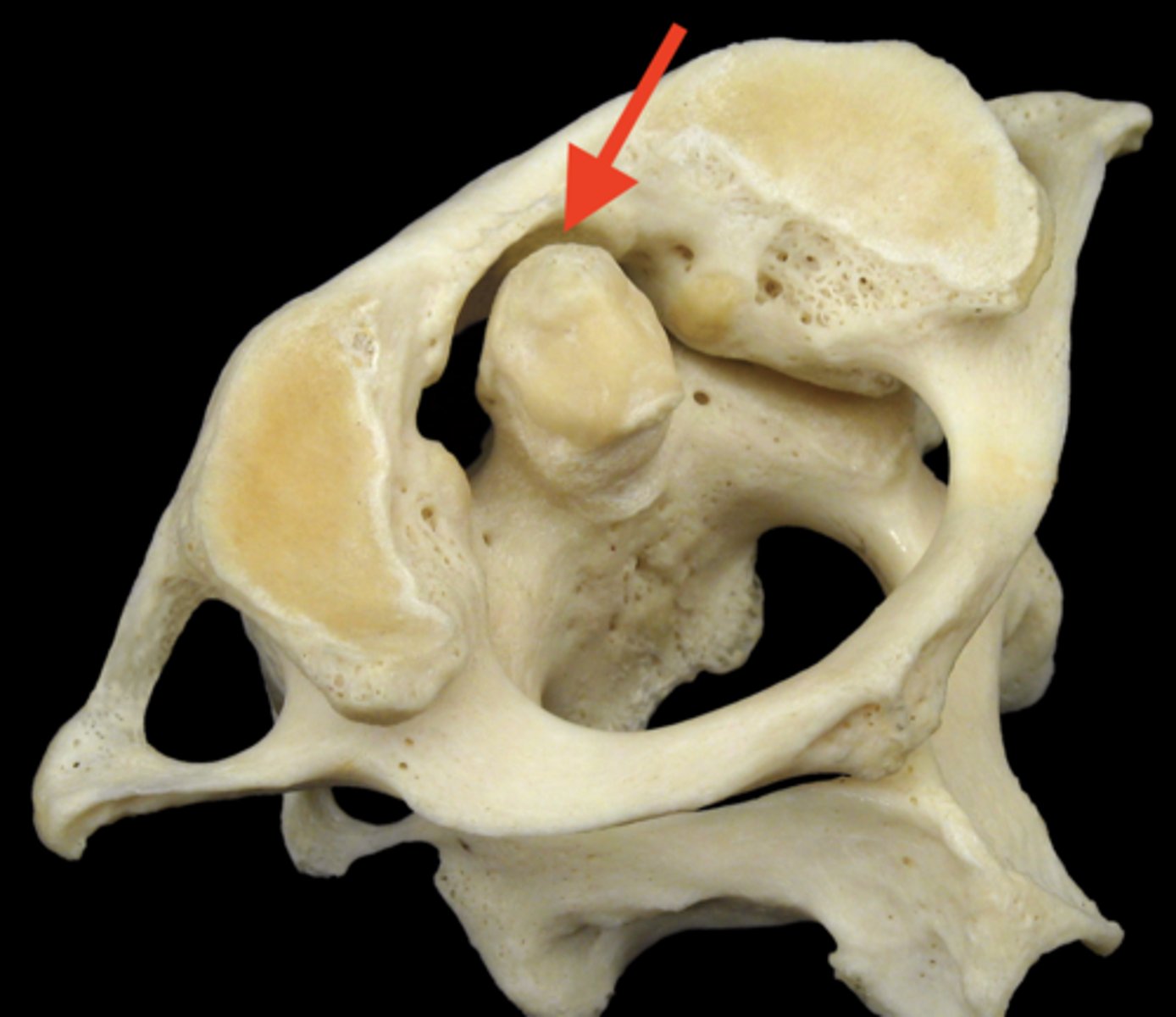Lecture 1 Vertebral Column and Spinal Cord
1/59
There's no tags or description
Looks like no tags are added yet.
Name | Mastery | Learn | Test | Matching | Spaced |
|---|
No study sessions yet.
60 Terms
Cervical
7 vertebrae with lordosis curvature and smaller vertebral bodies

Thoracic
12 vertebrae with kyphosis curve
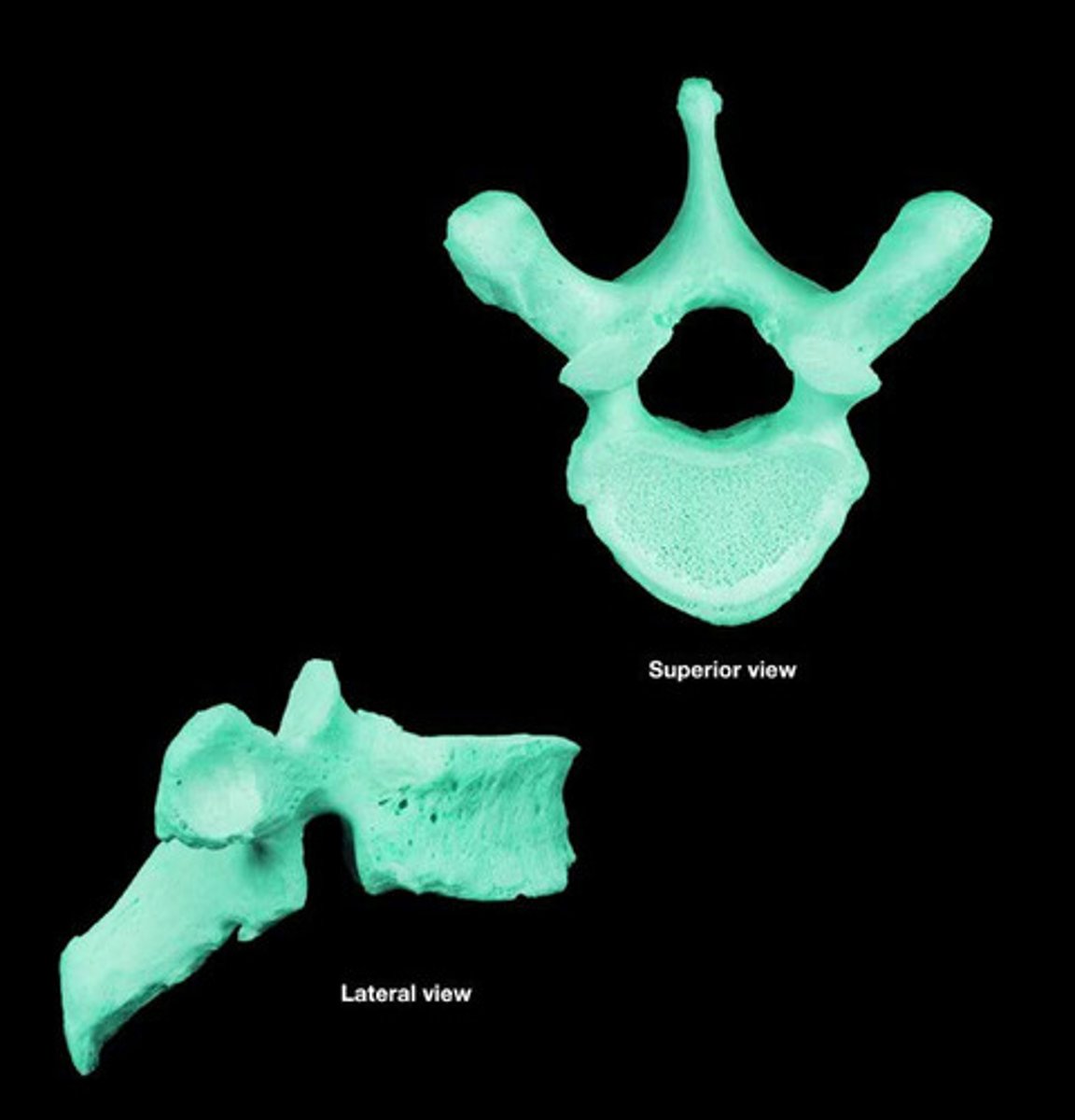
Lumbar
5 vertebrae with lordosis curve
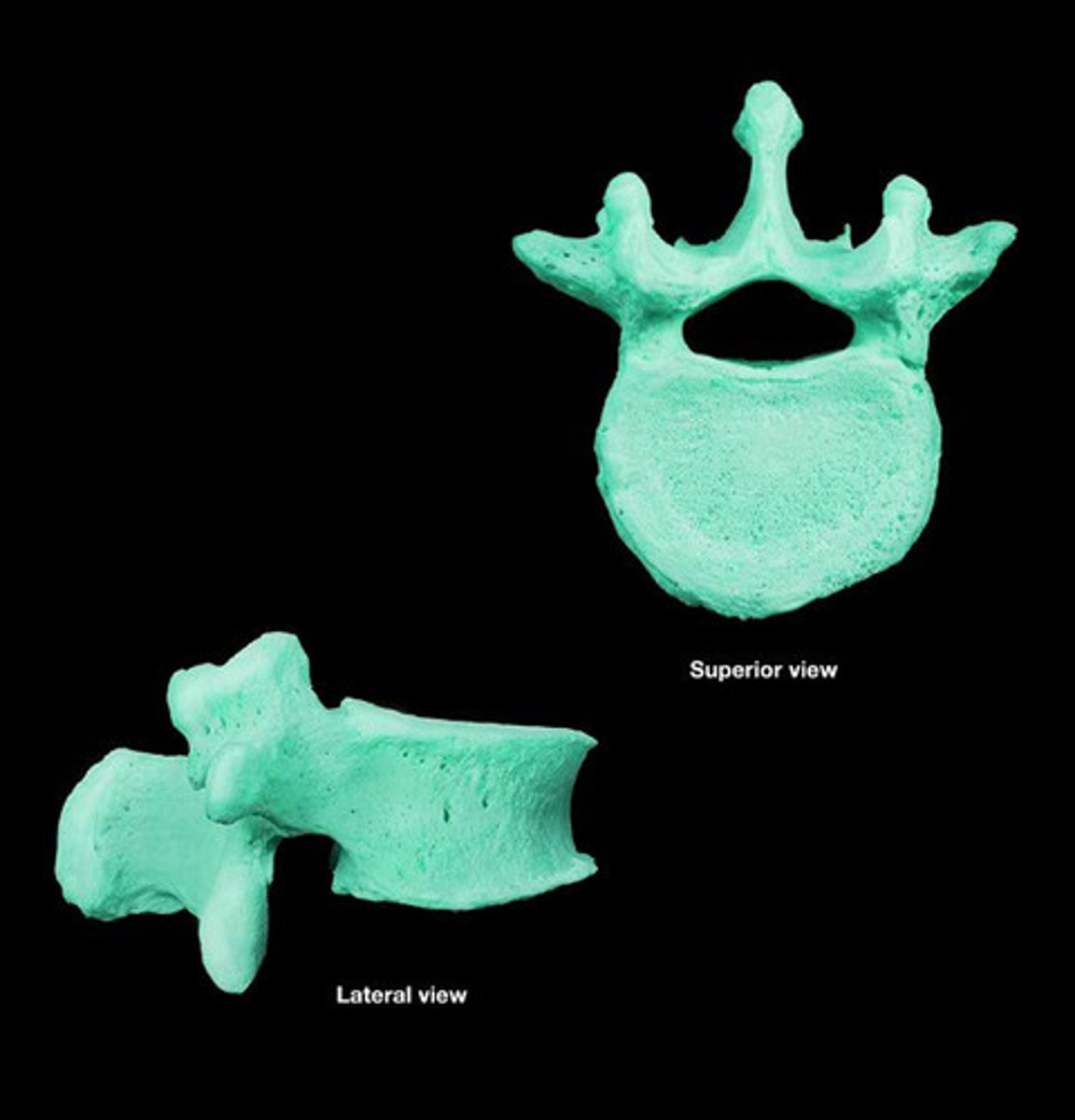
Sacrum
1 from 4/5 fused vertebrae with kyphotic curvature
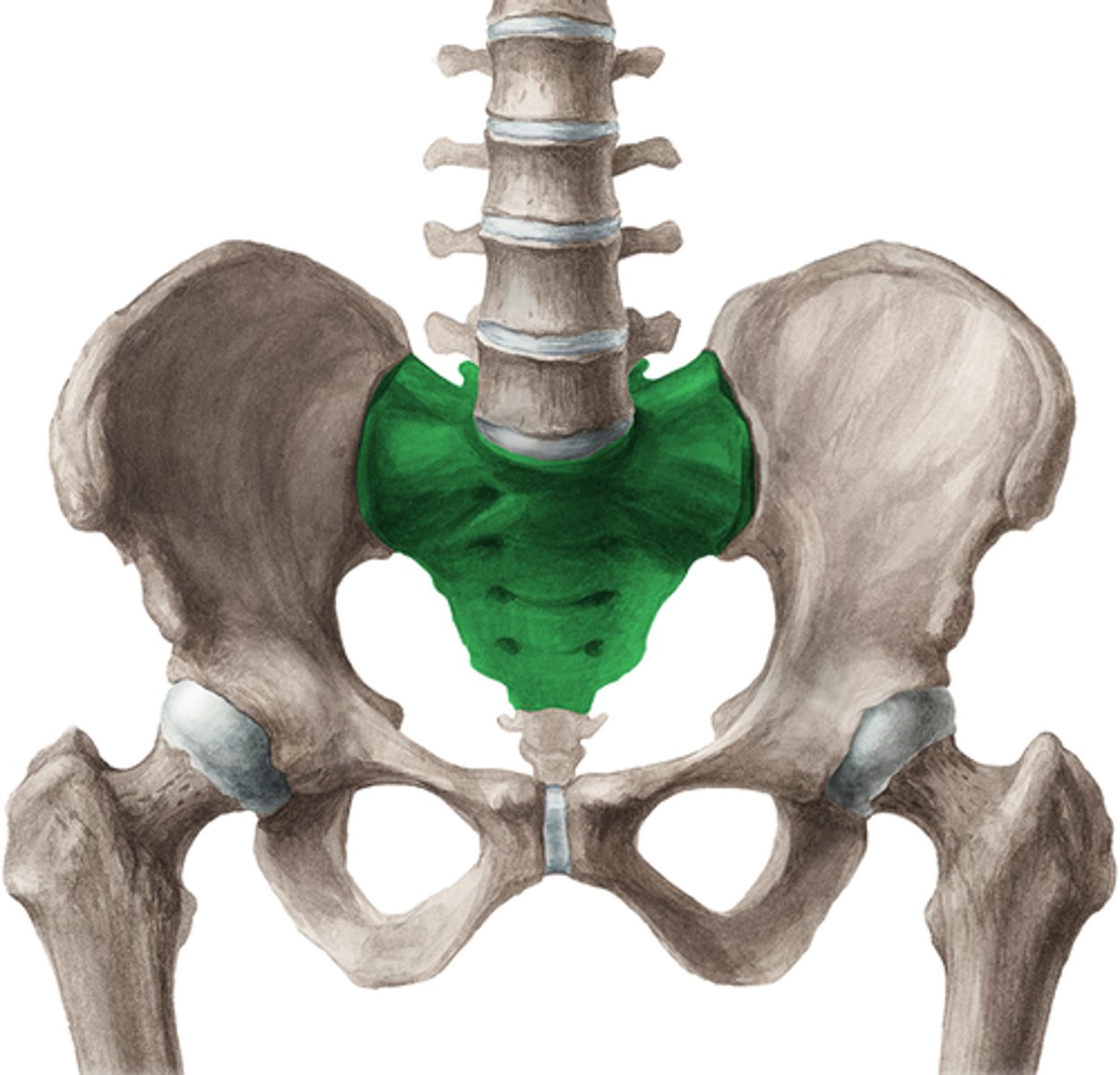
Coccyx
four vertebrae fused together to form the tailbone
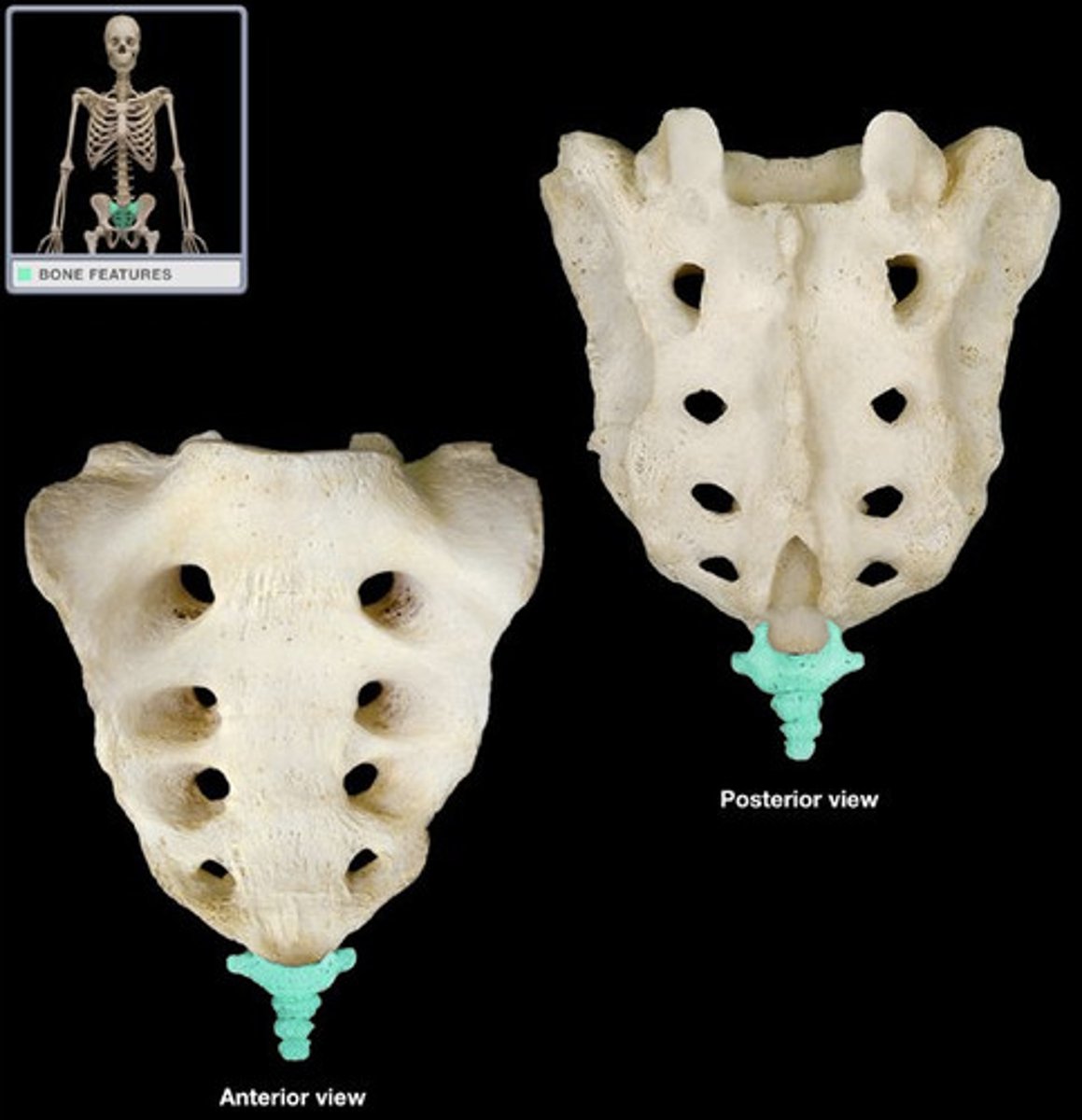
Pedicle
Name this specific part of the thoracic vertebra.
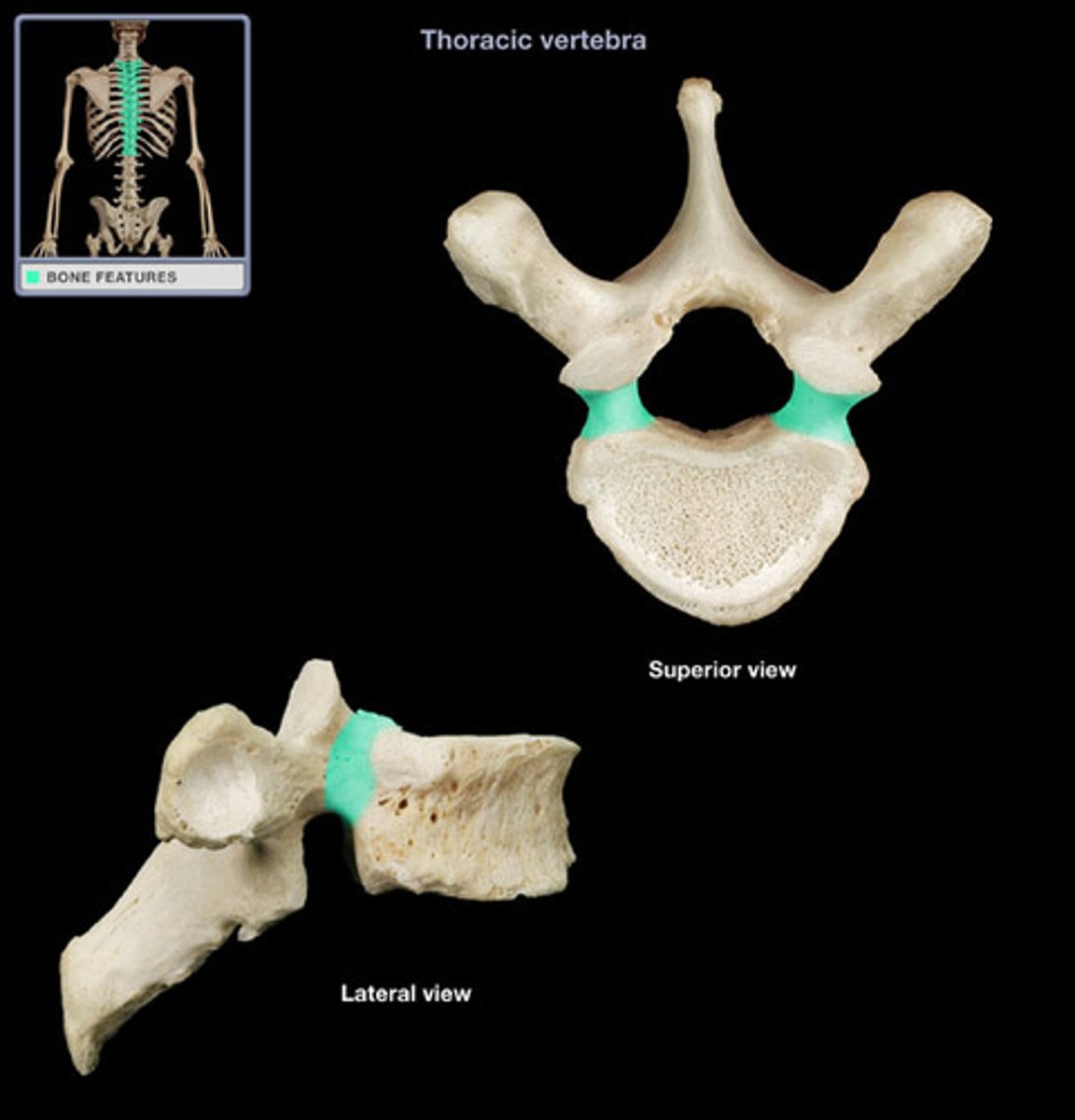
Transverse process
two lateral projections from the vertebral arch
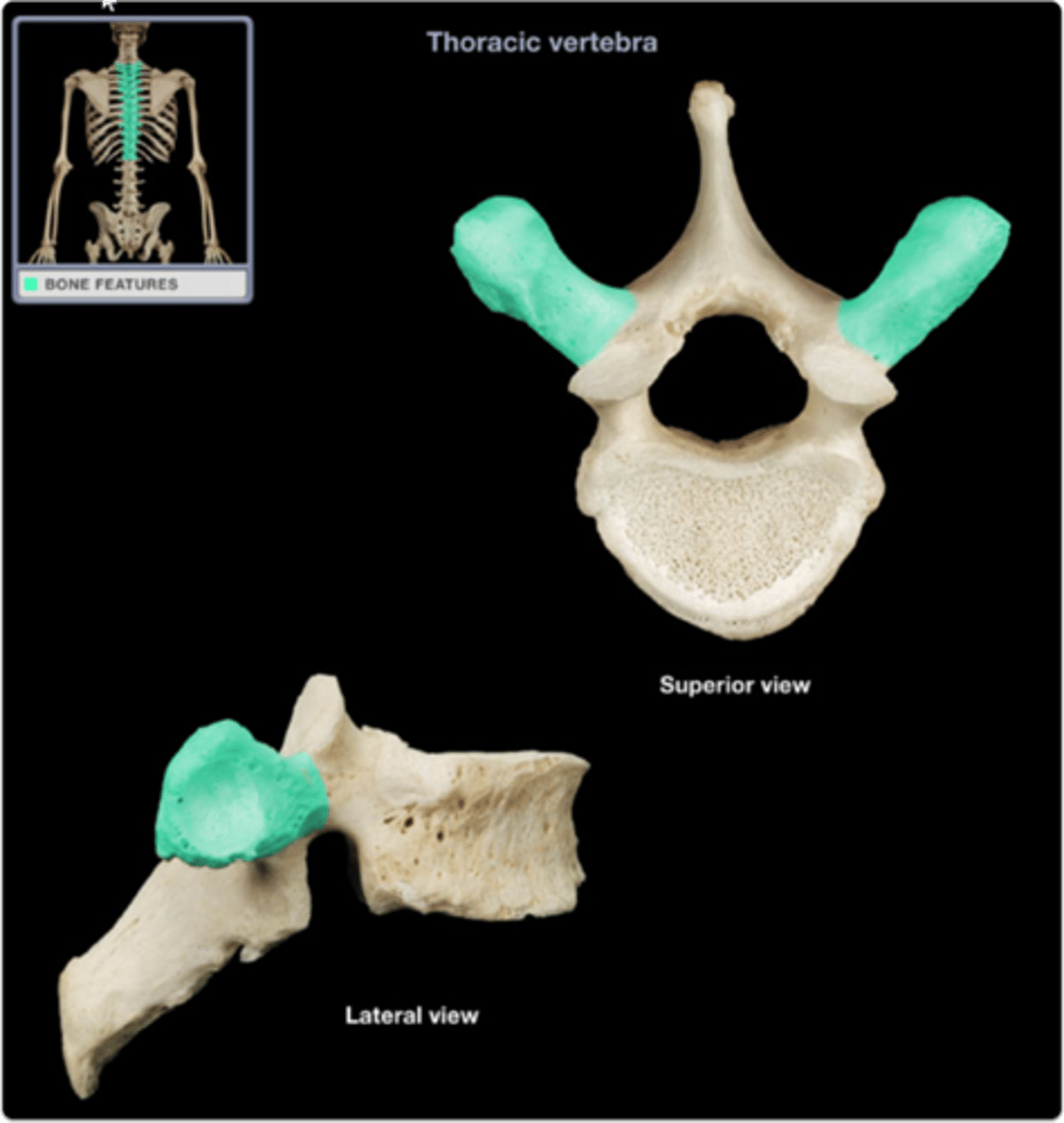
Vertebral body
main portion of the vertebra, separate from the arches of the vertebra
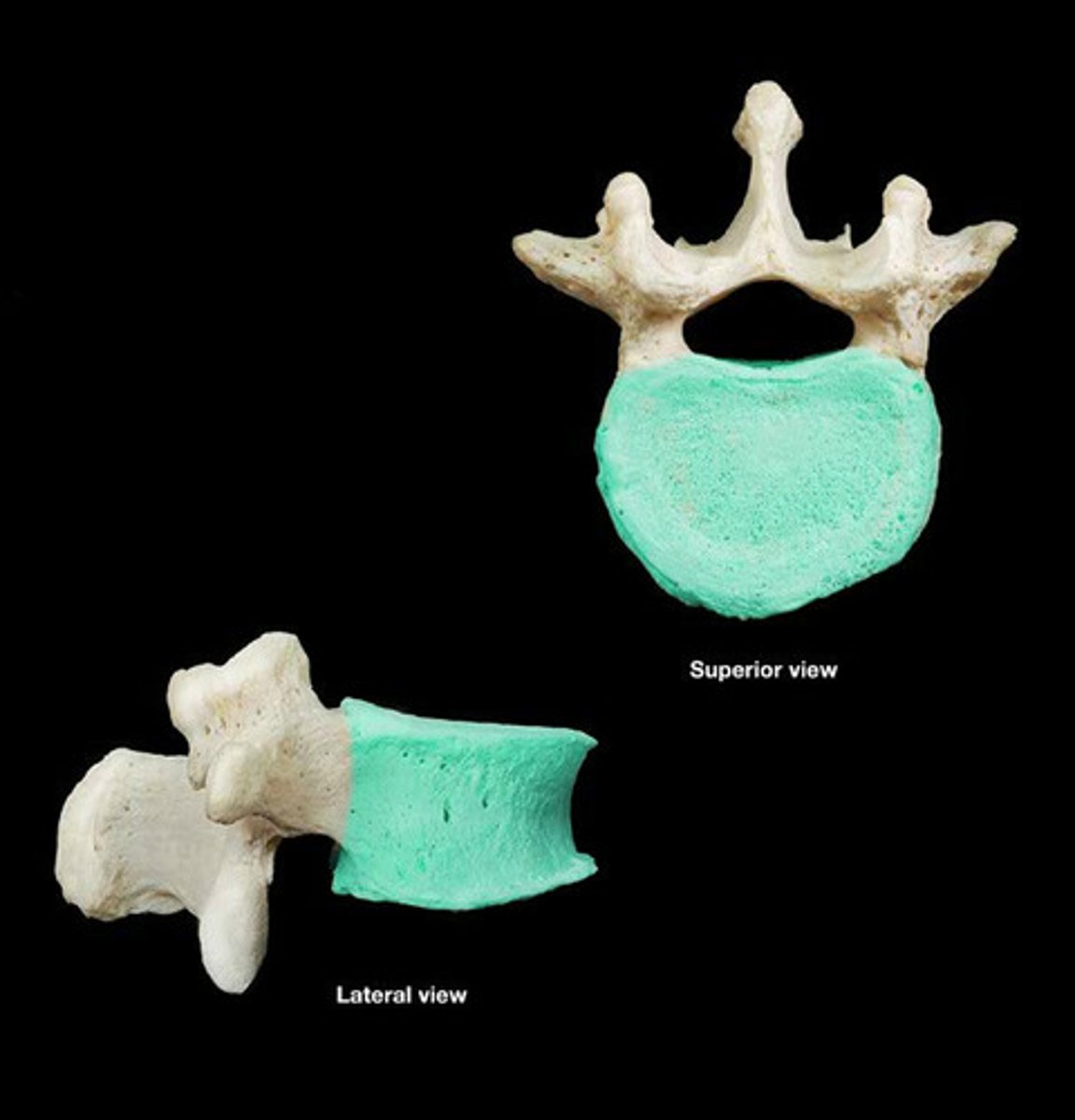
Posterior tubercle
What is "E" on the cervical vertebrae
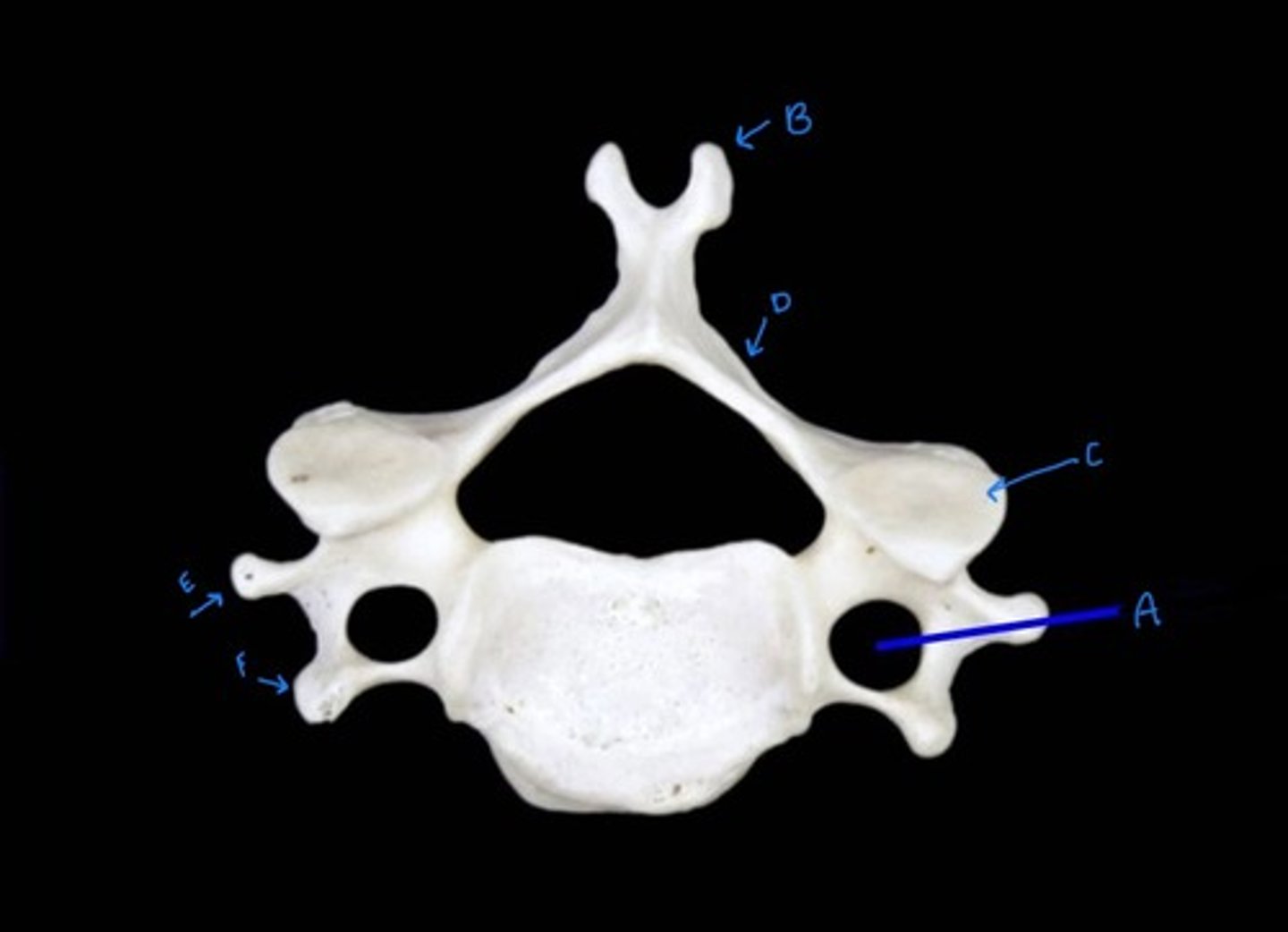
Anterior tubercle
What is "F" on the cervical vertebrae
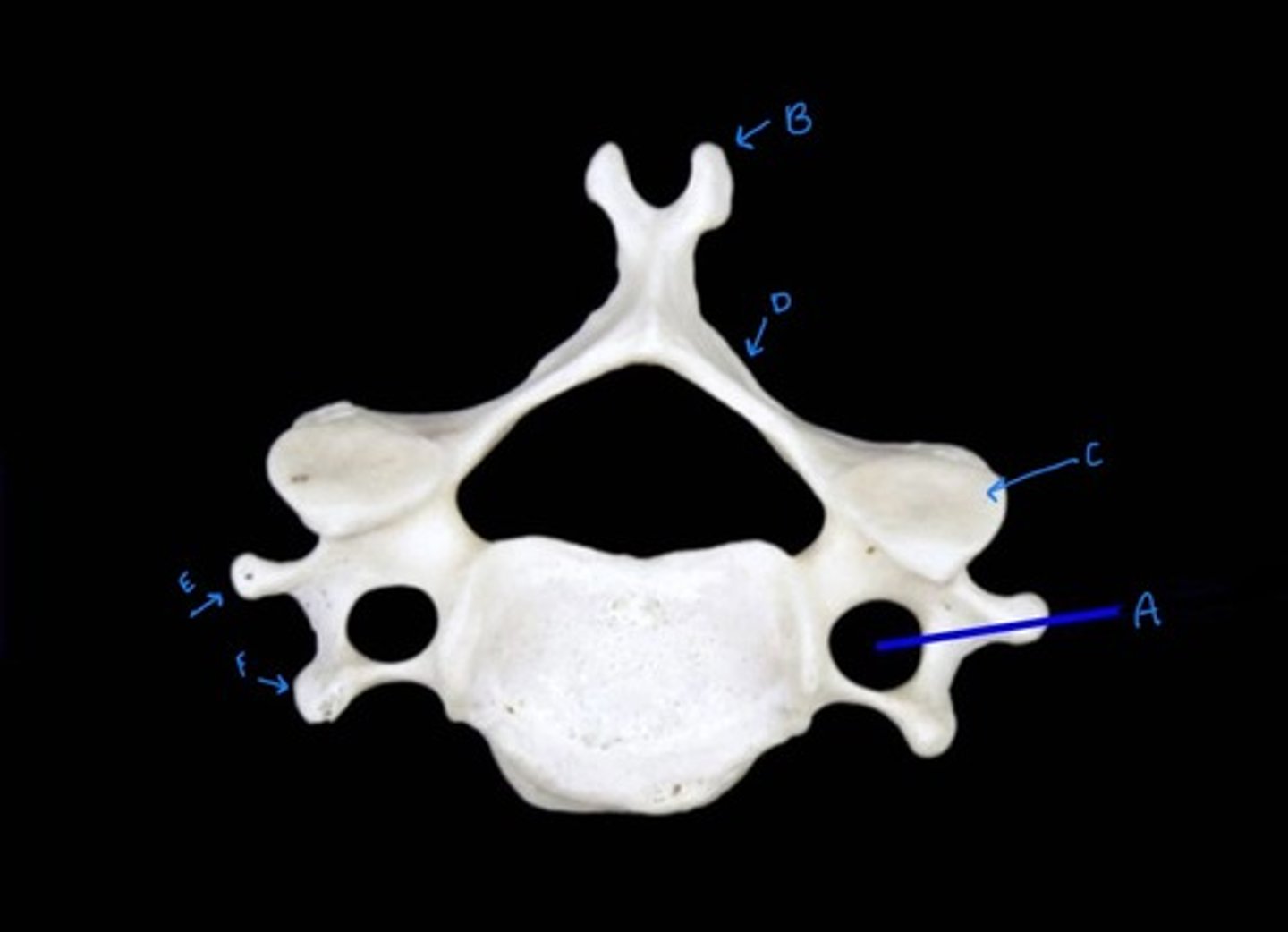
Act as the transverse process. More muscle attachments are needed in this area
What is the purpose of the anterior and posterior tubercle on the cervical vertebrae?
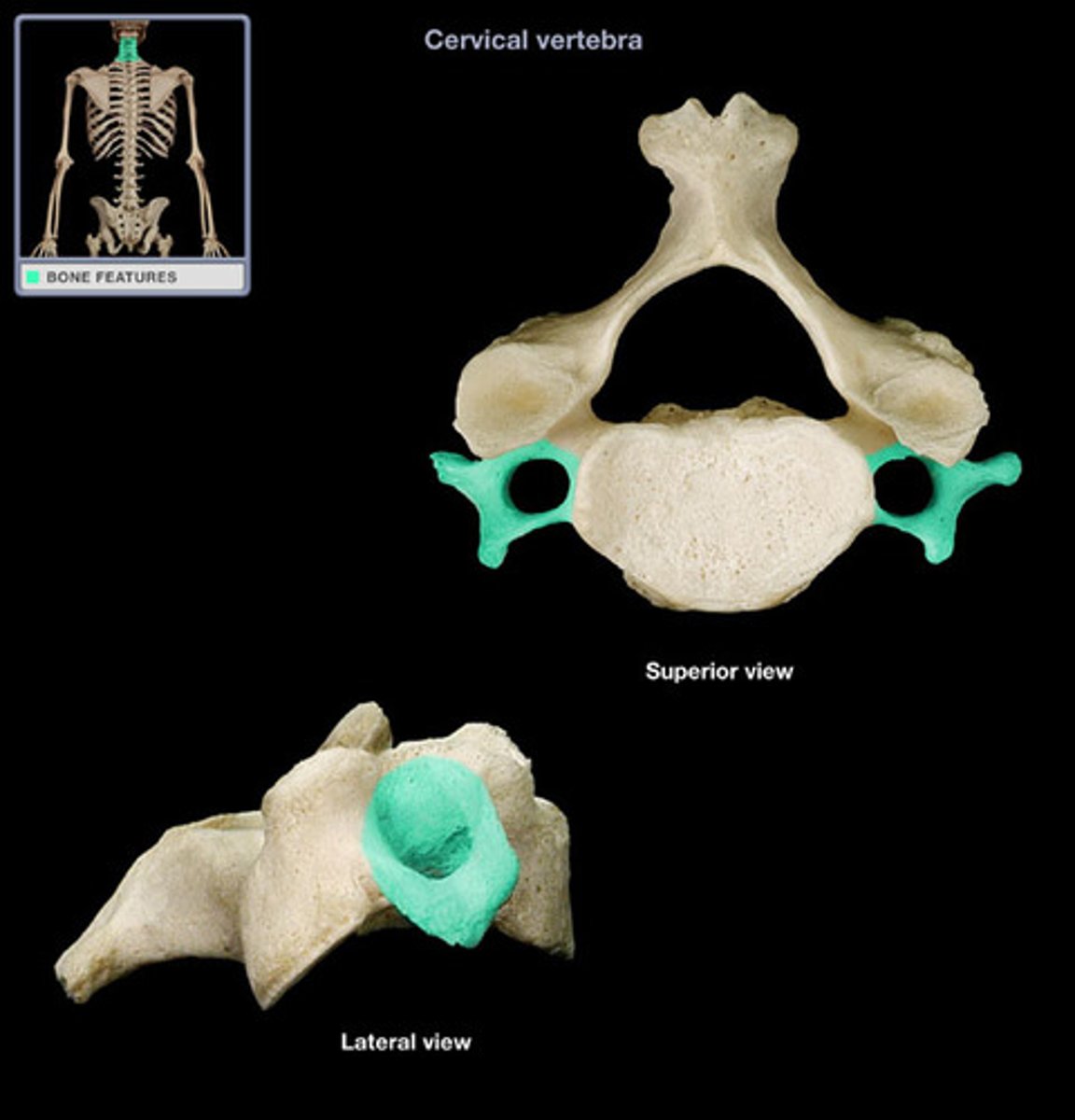
Transverse foramen
only found in the cervical vertebrae and allow passage of the vertebral artery, vein, and nerve
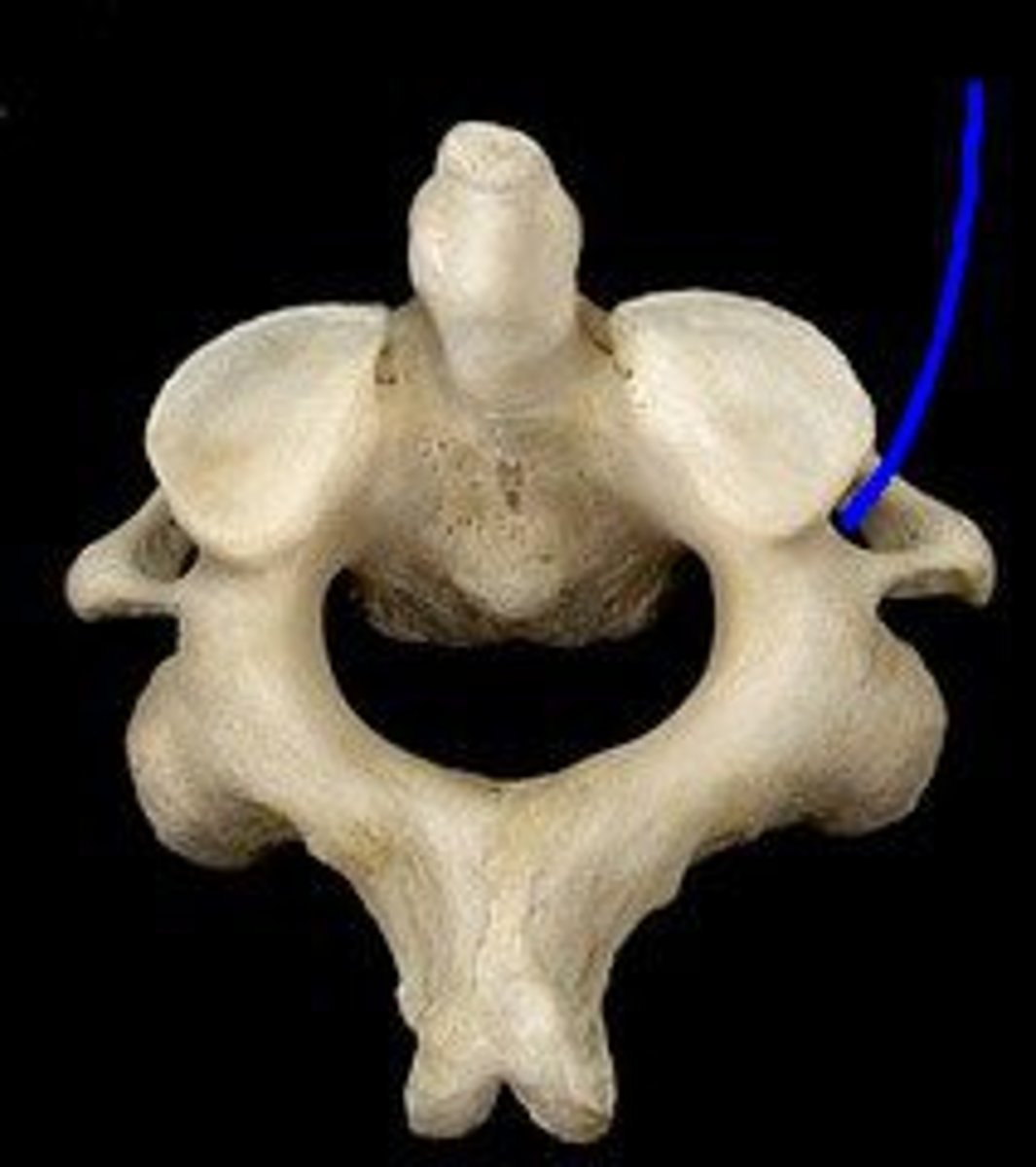
superior articular facet
What is the highlighted structure?
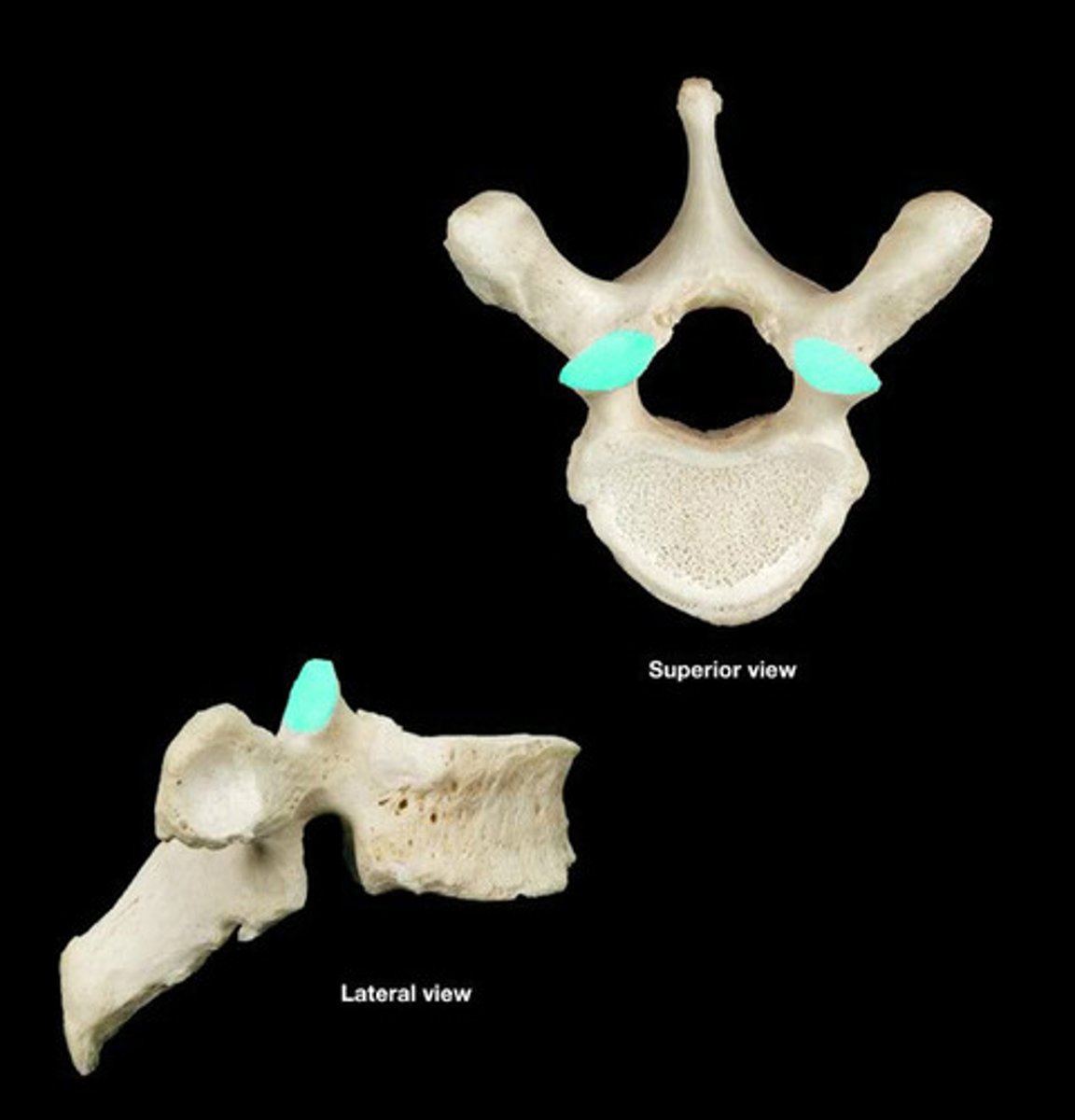
inferior articular facet
What is the highlighted structure?
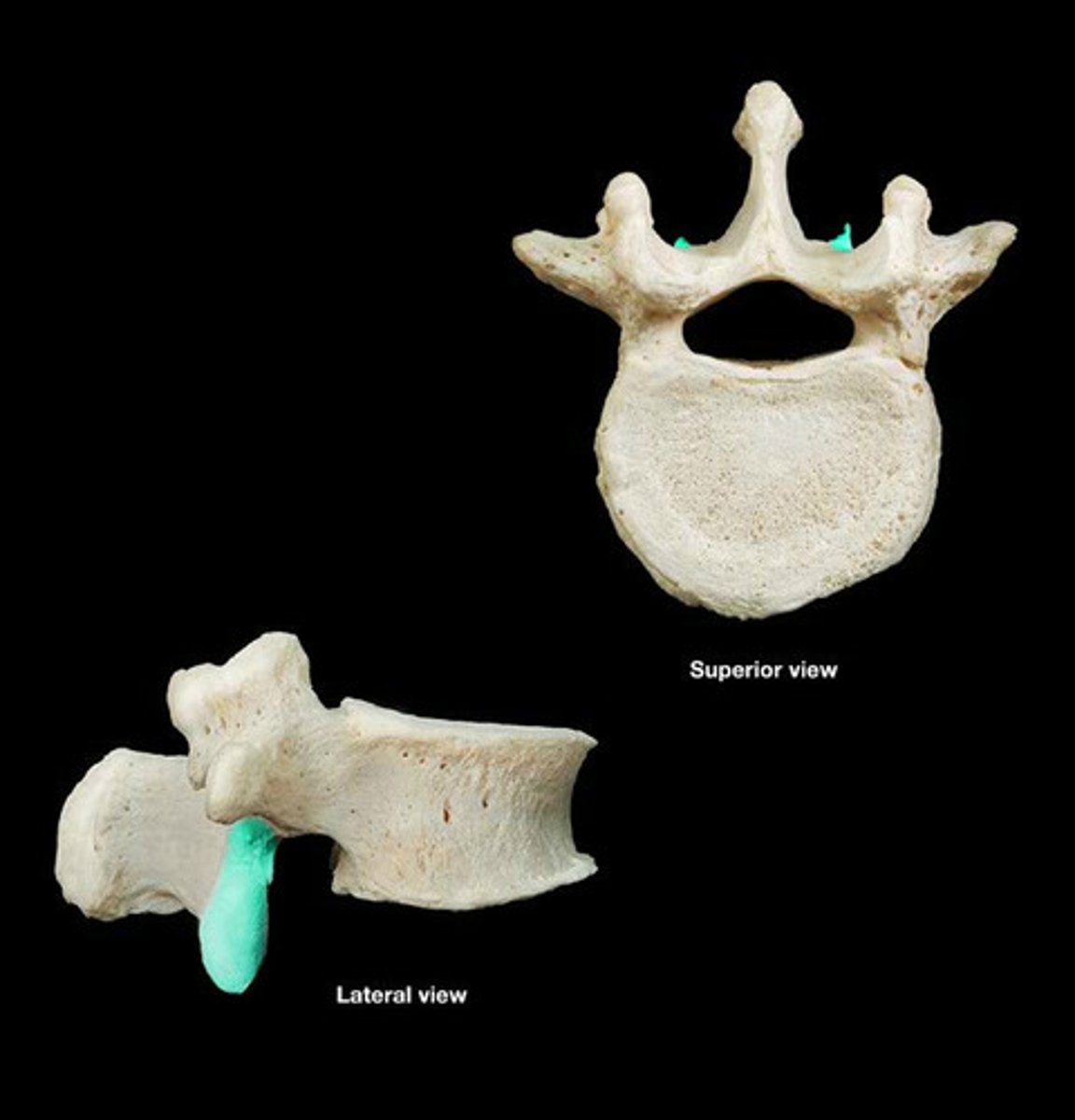
lamina
part of the vertebral arch
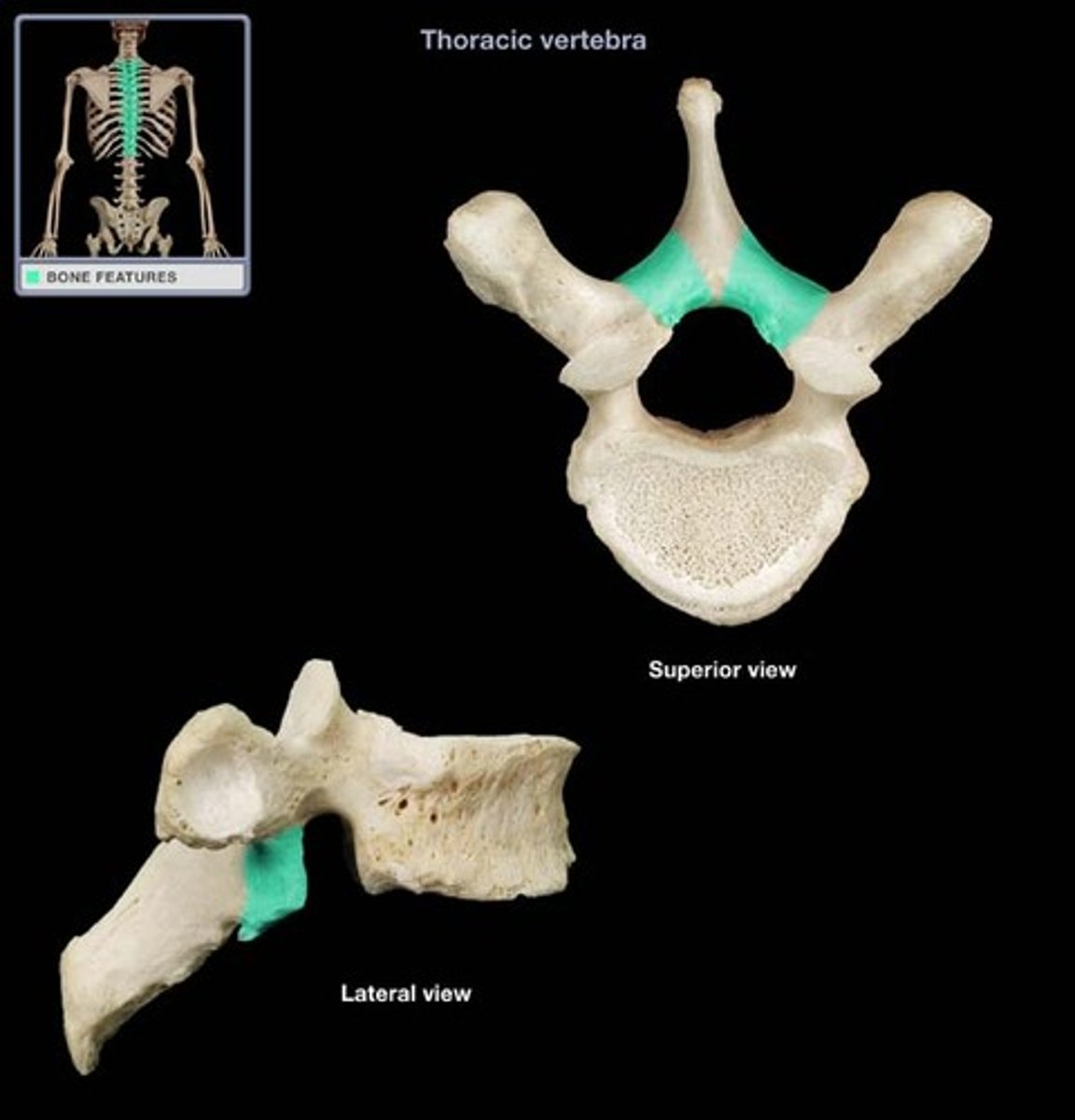
spinous process
sharp, slender projection
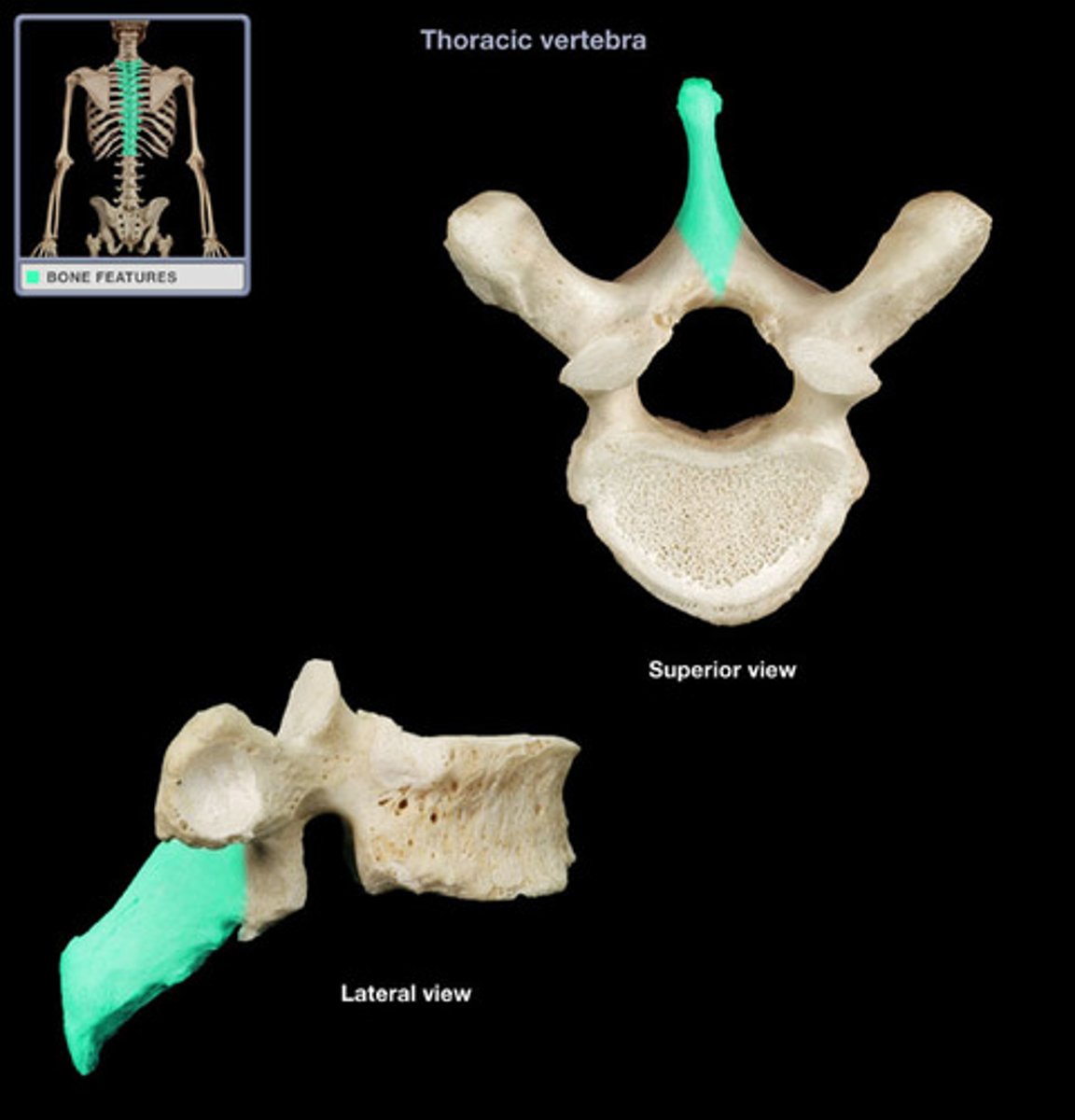
Bifid spinous process
found on cervical vertebrae C3-C7
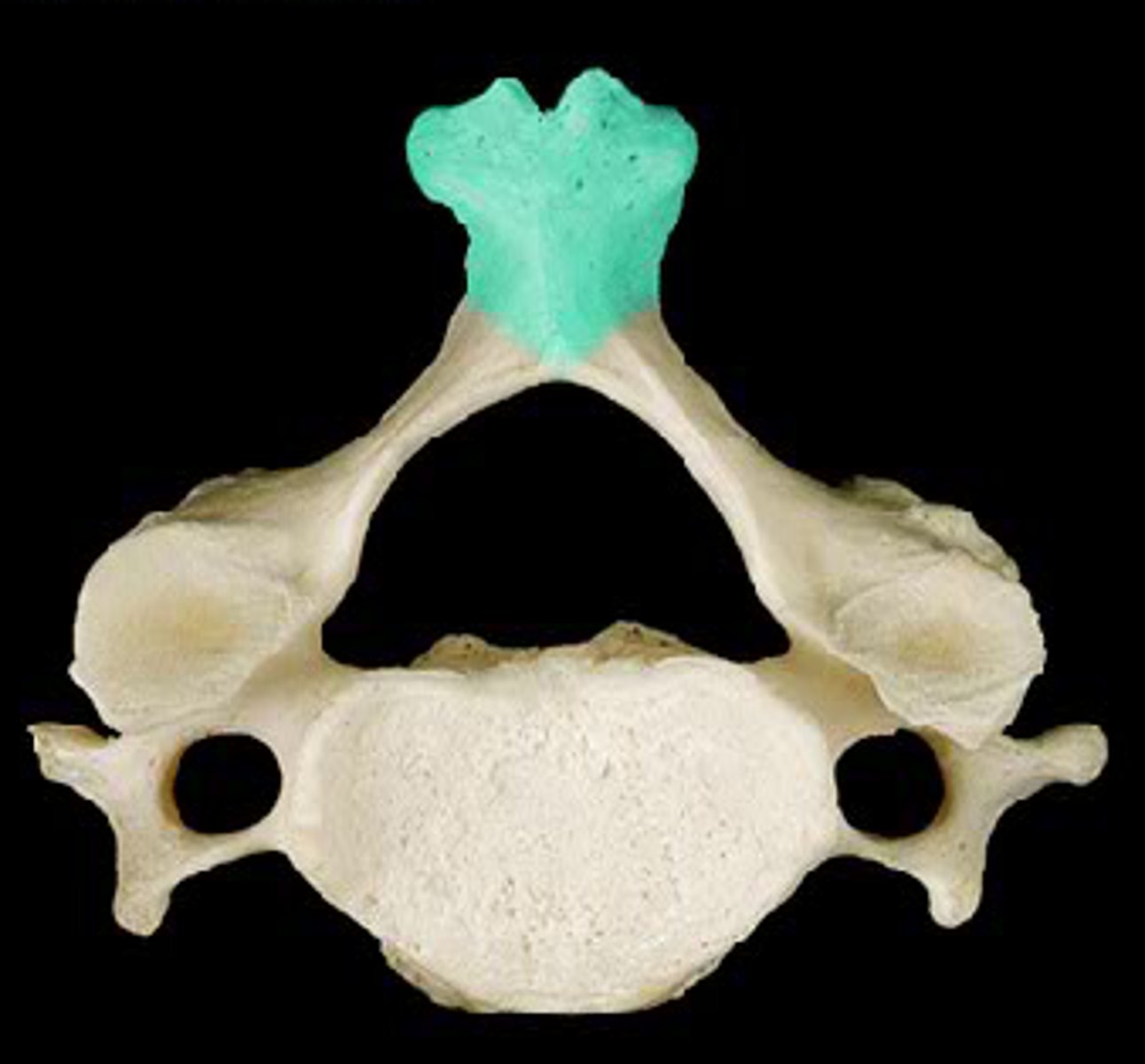
anterior arch of atlas
What is "B"
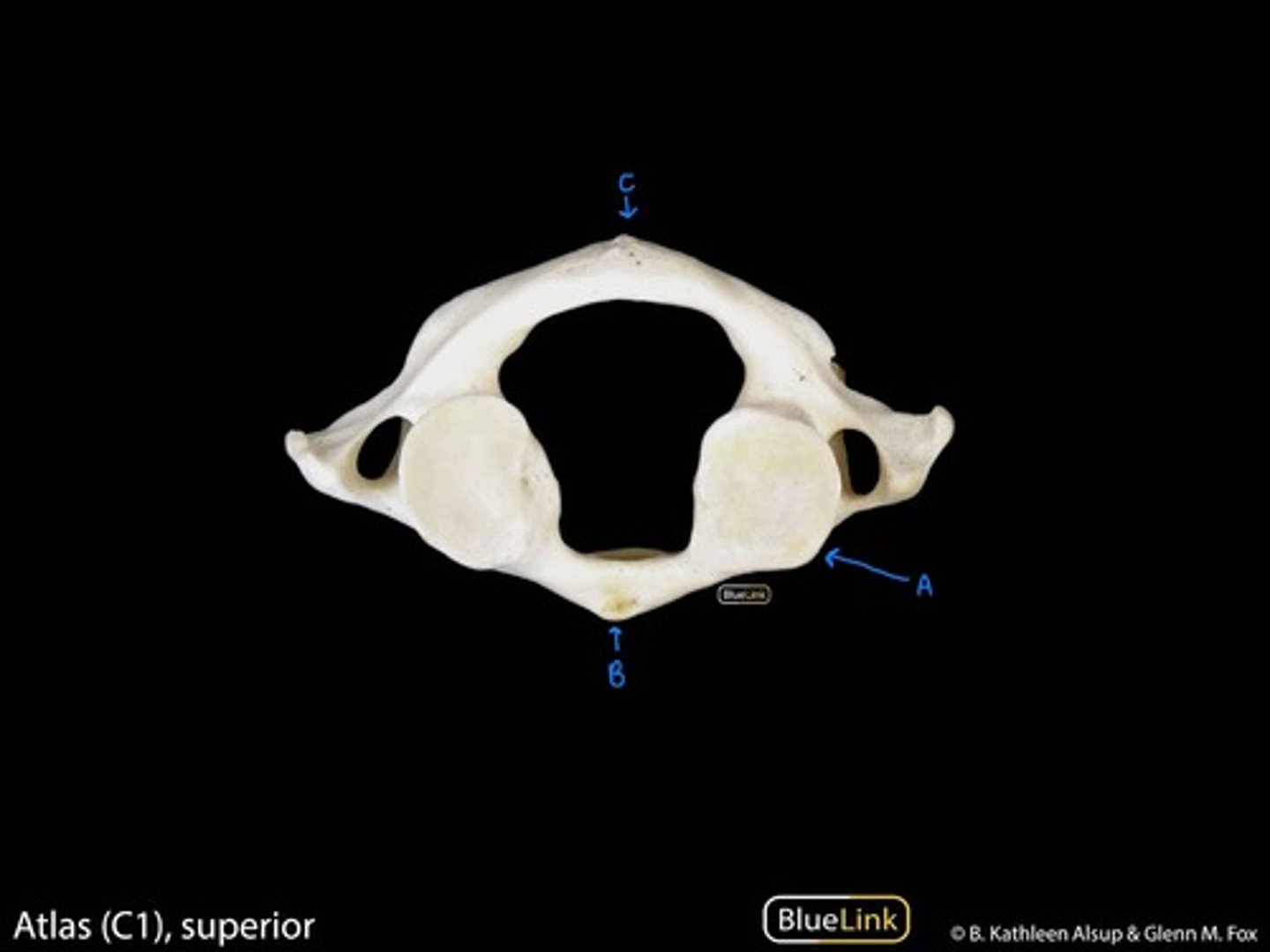
posterior arch of atlas
What is "C"
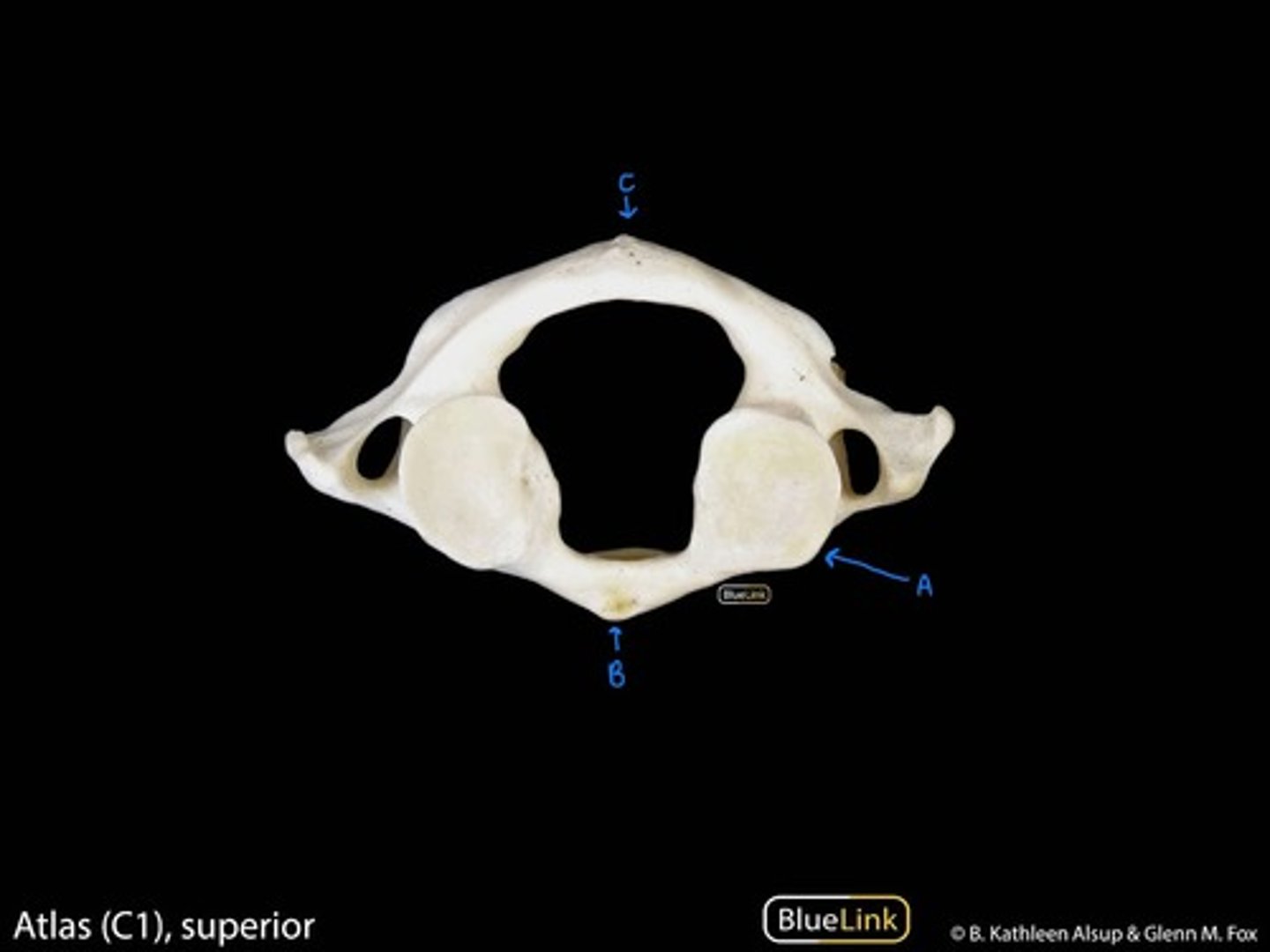
Horizontal superior articular process
What is "A"

dens (C2 only)
What is the highlighted structure called?
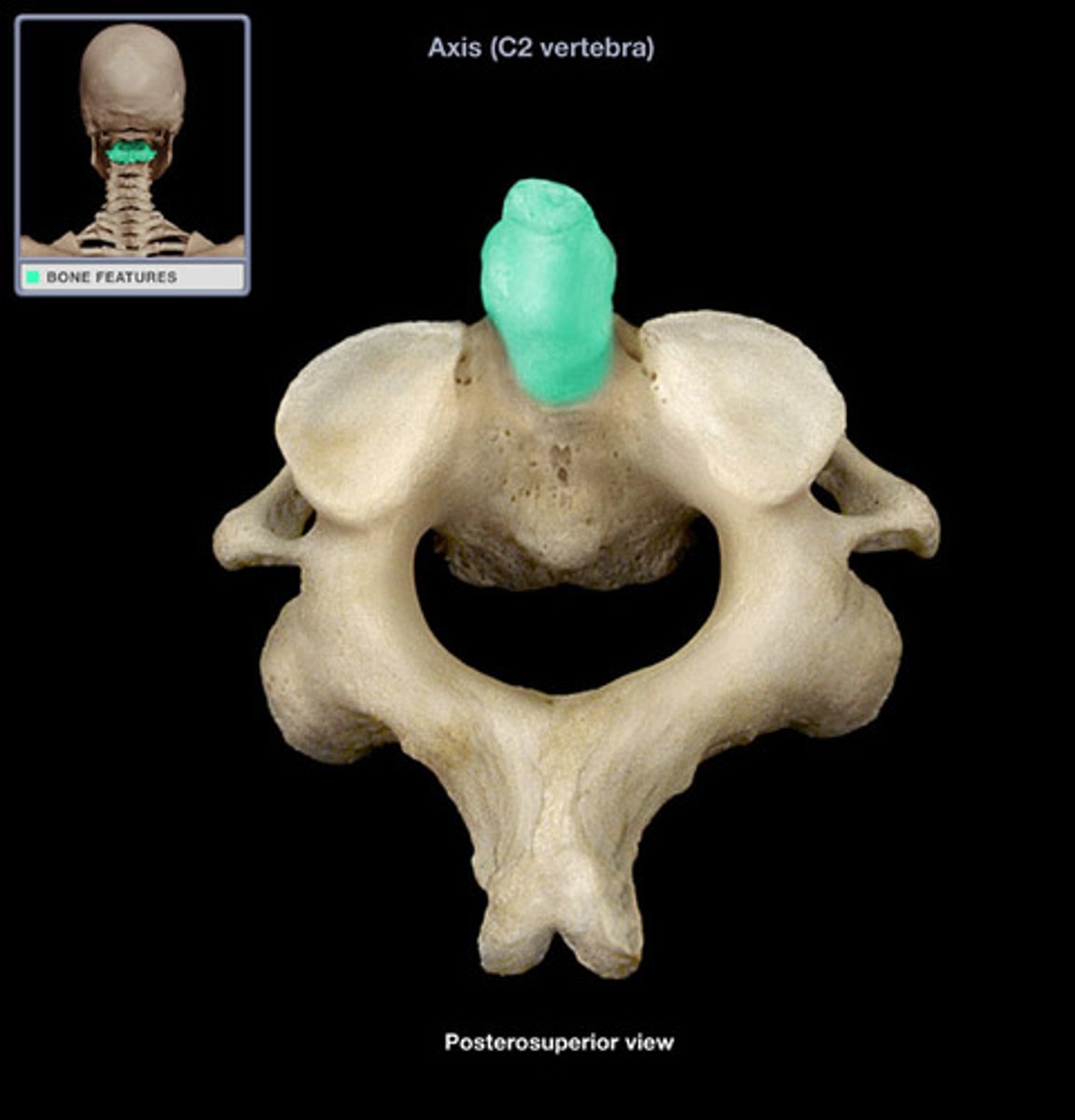
uncinate process
What is the highlighted structure
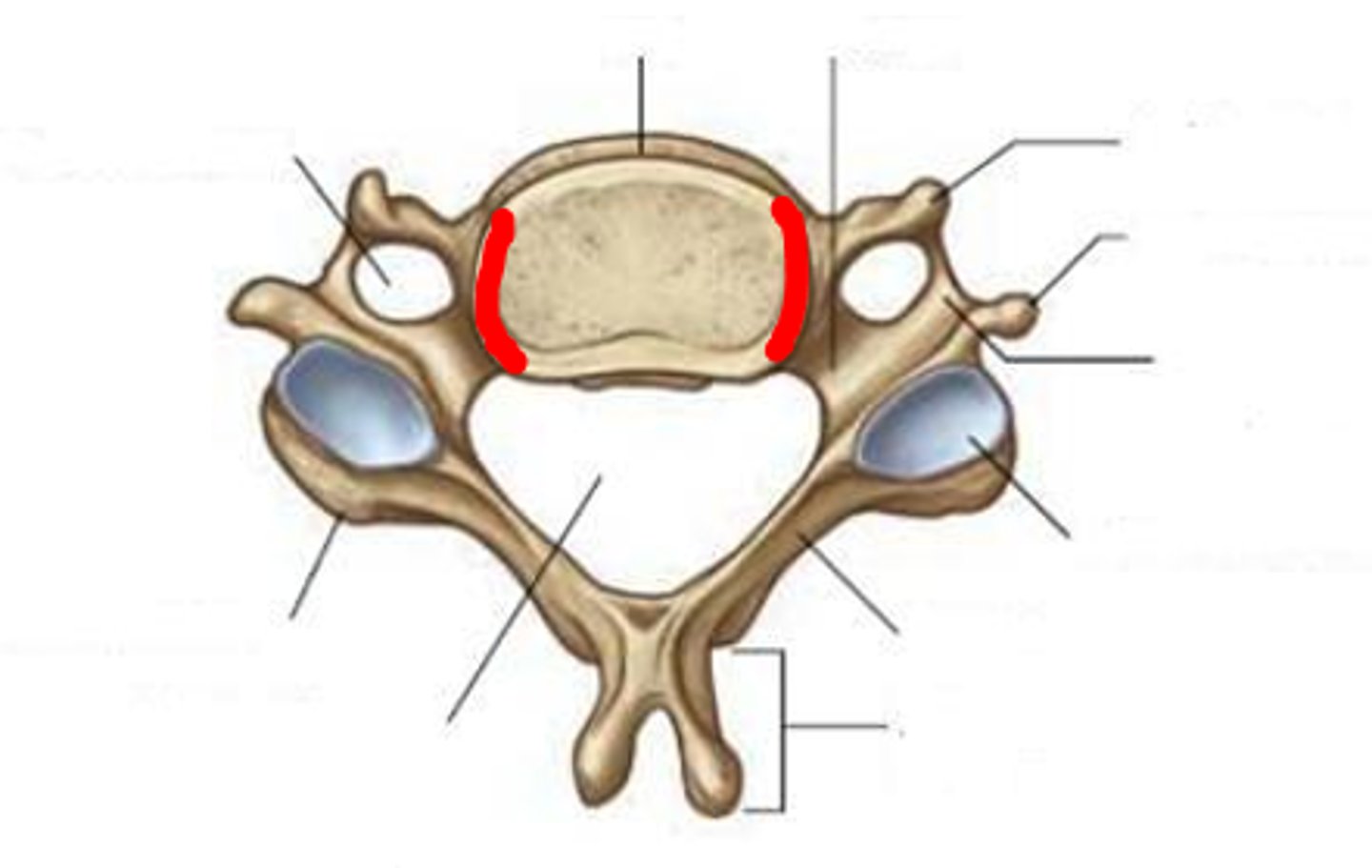
bifurcate
divide into two parts
Sacral promontory
Where the first sacral vertebrae bulges into pelvic cavity

Anterior sacral foramen
What is the highlighted structure
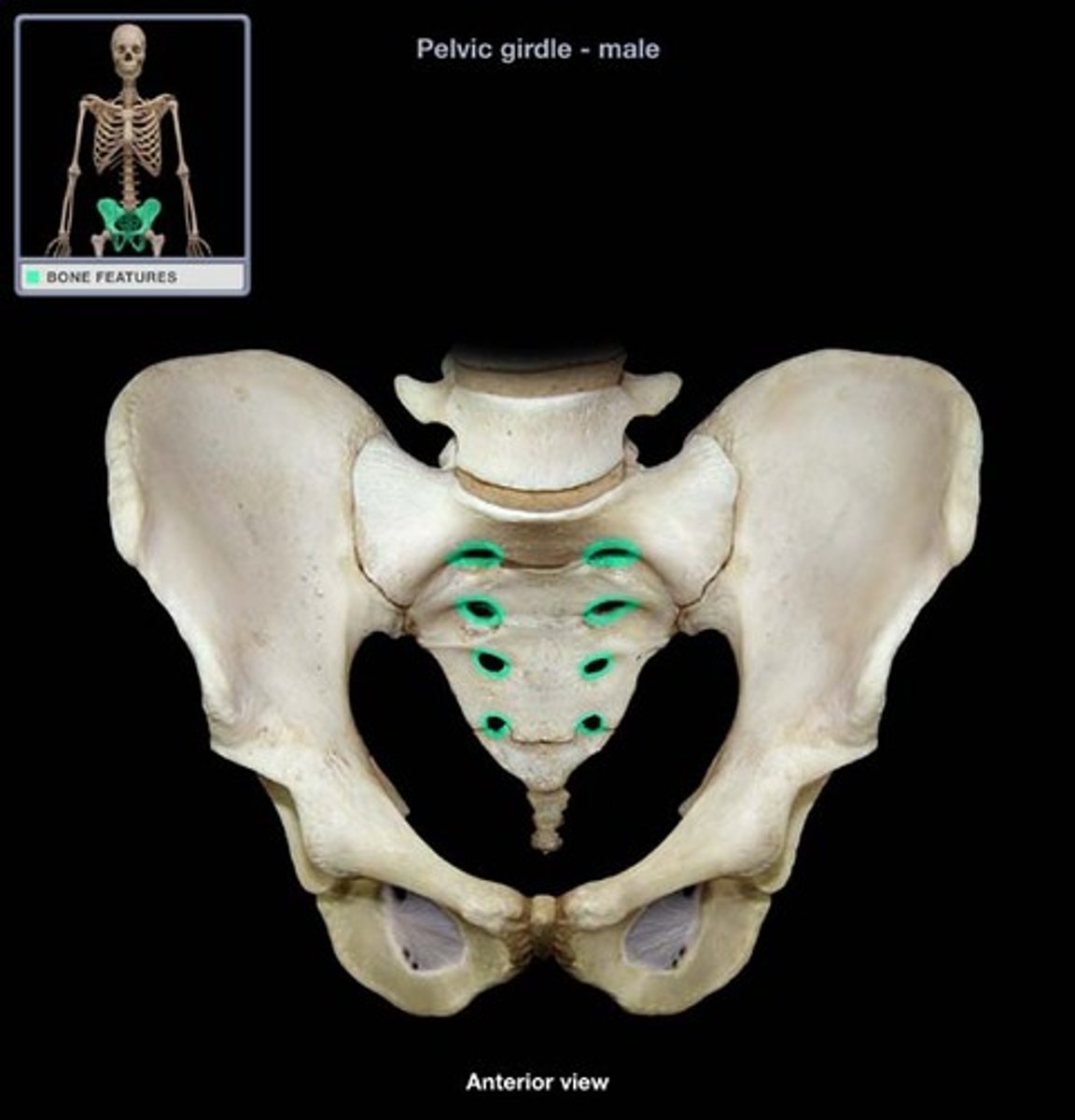
Posterior sacral foramen
What is the highlighted structure
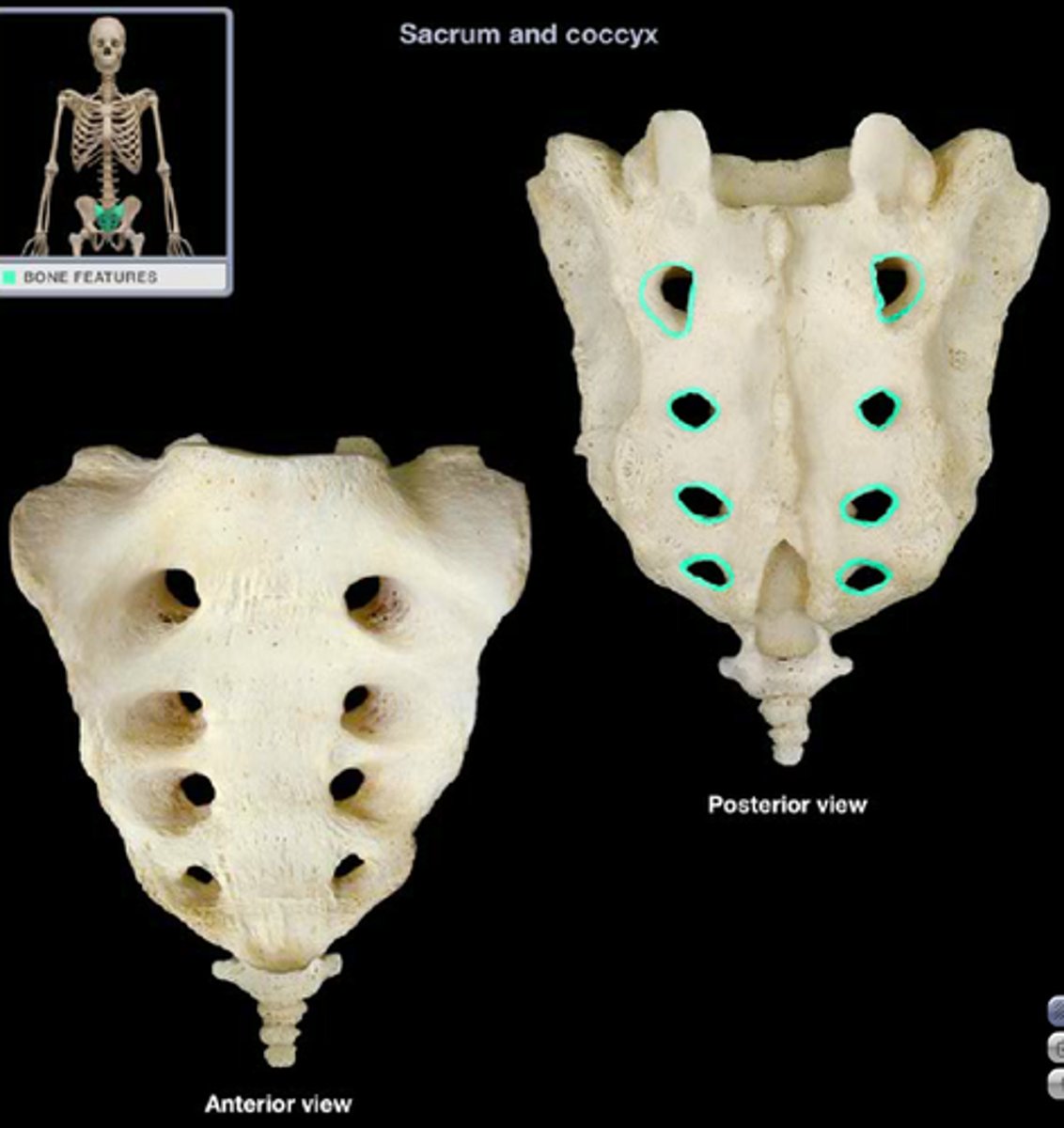
vertebral foramen
canal through which spinal cord passes
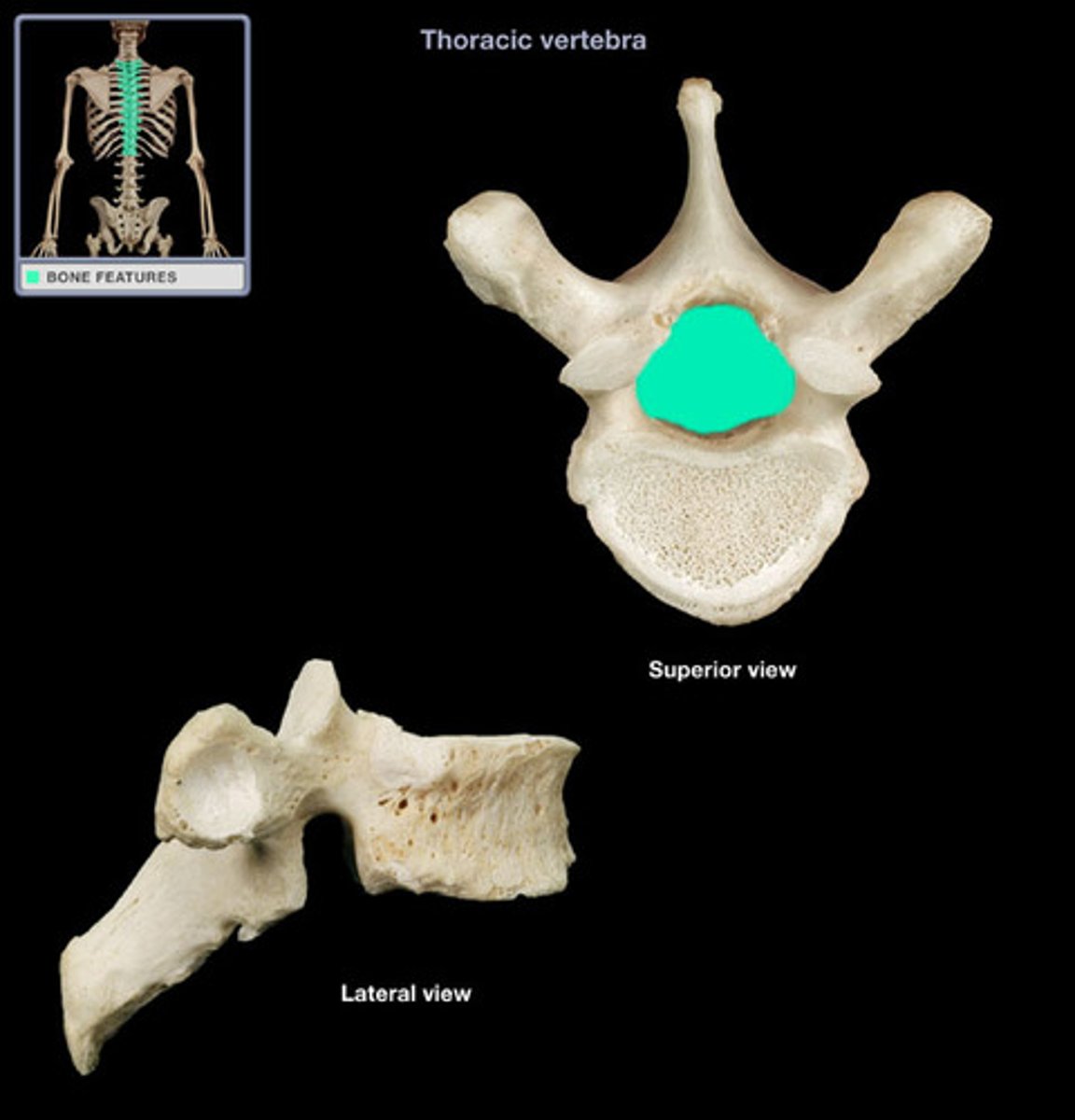
Vertebral canal (vertebral foramina)
Made up of the cervical, thoracic, and lumbar verebrae
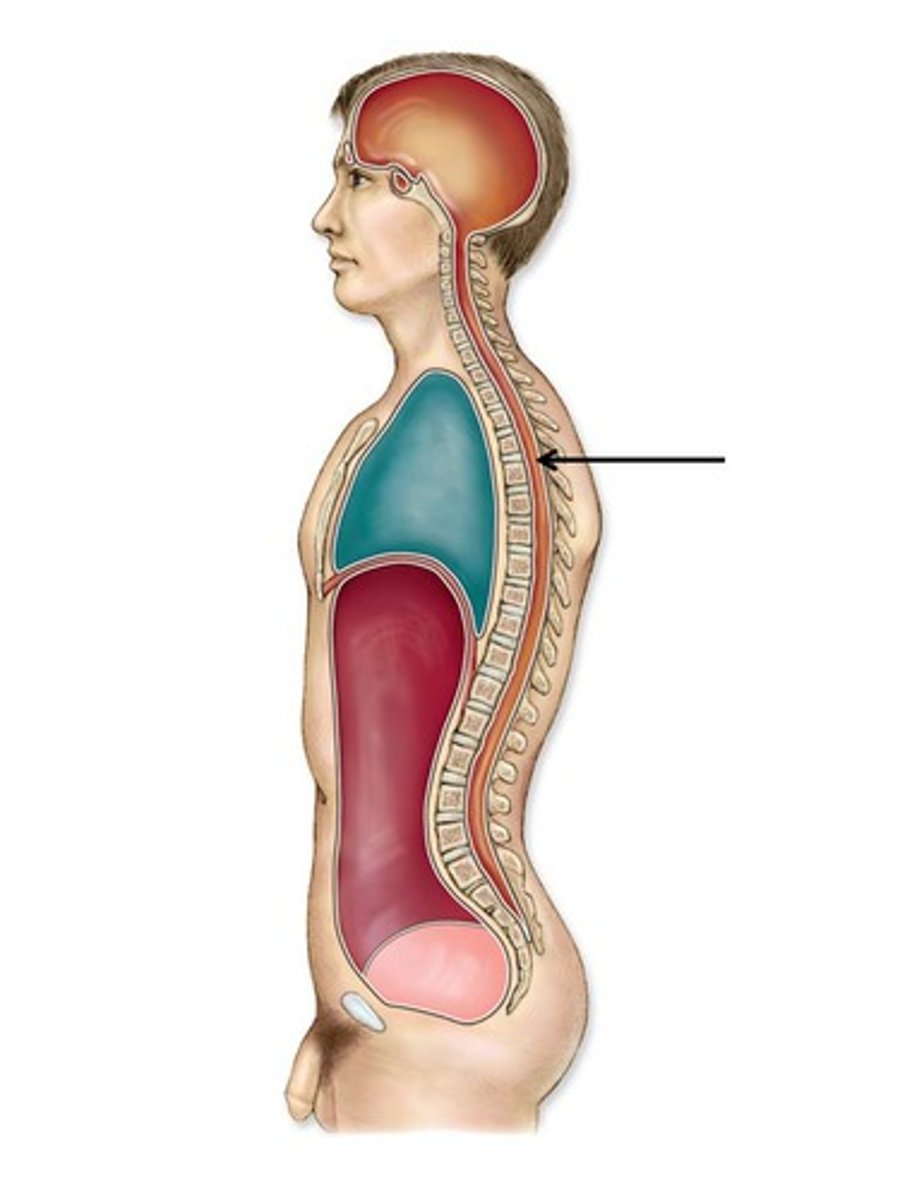
Sacral canal
continuation of vertebral canal
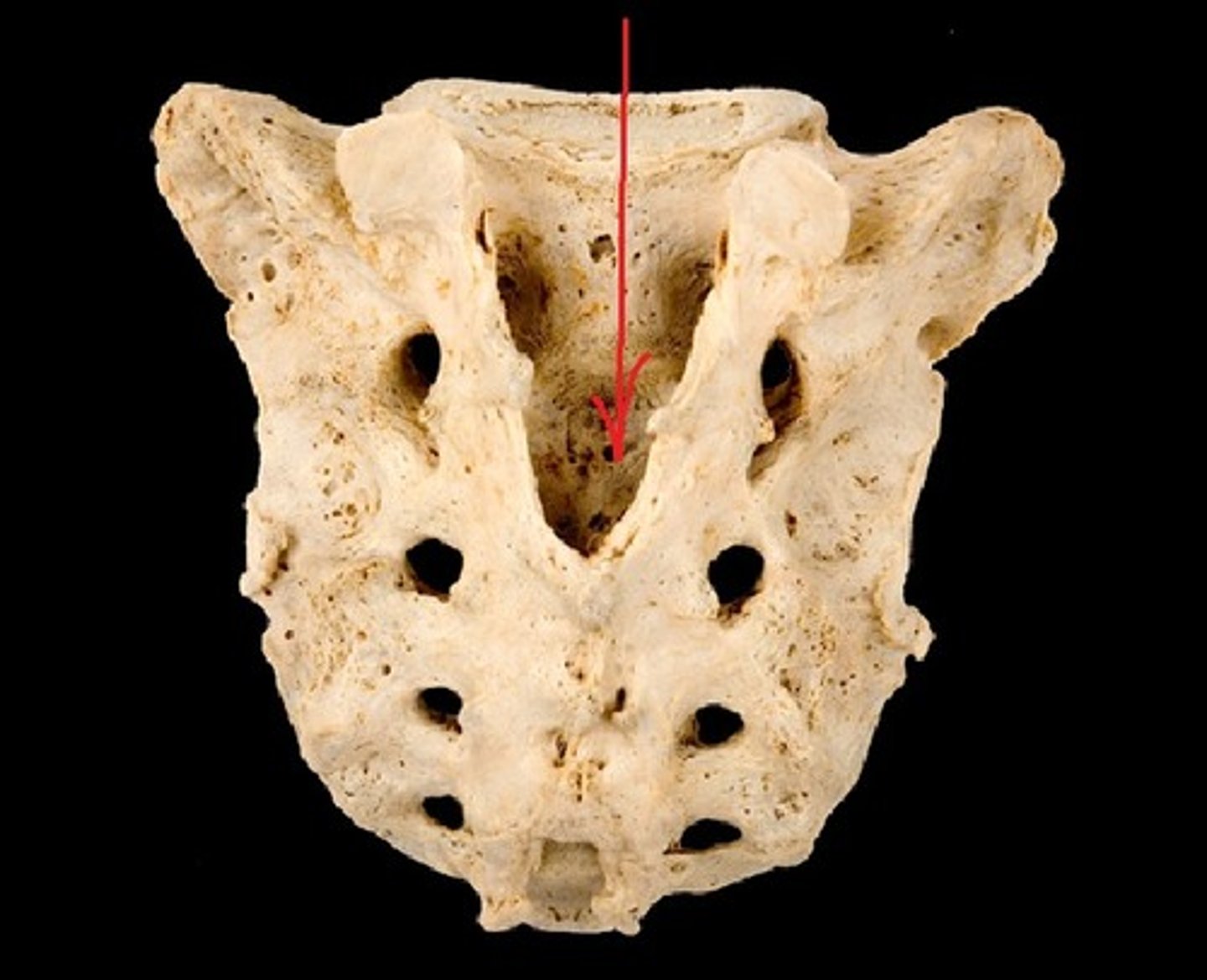
Spinal canal
Made up of the vertebral and sacral canals which contains spinal cord
Zygapophyseal/facet joints
Formed by superior and inferior facets
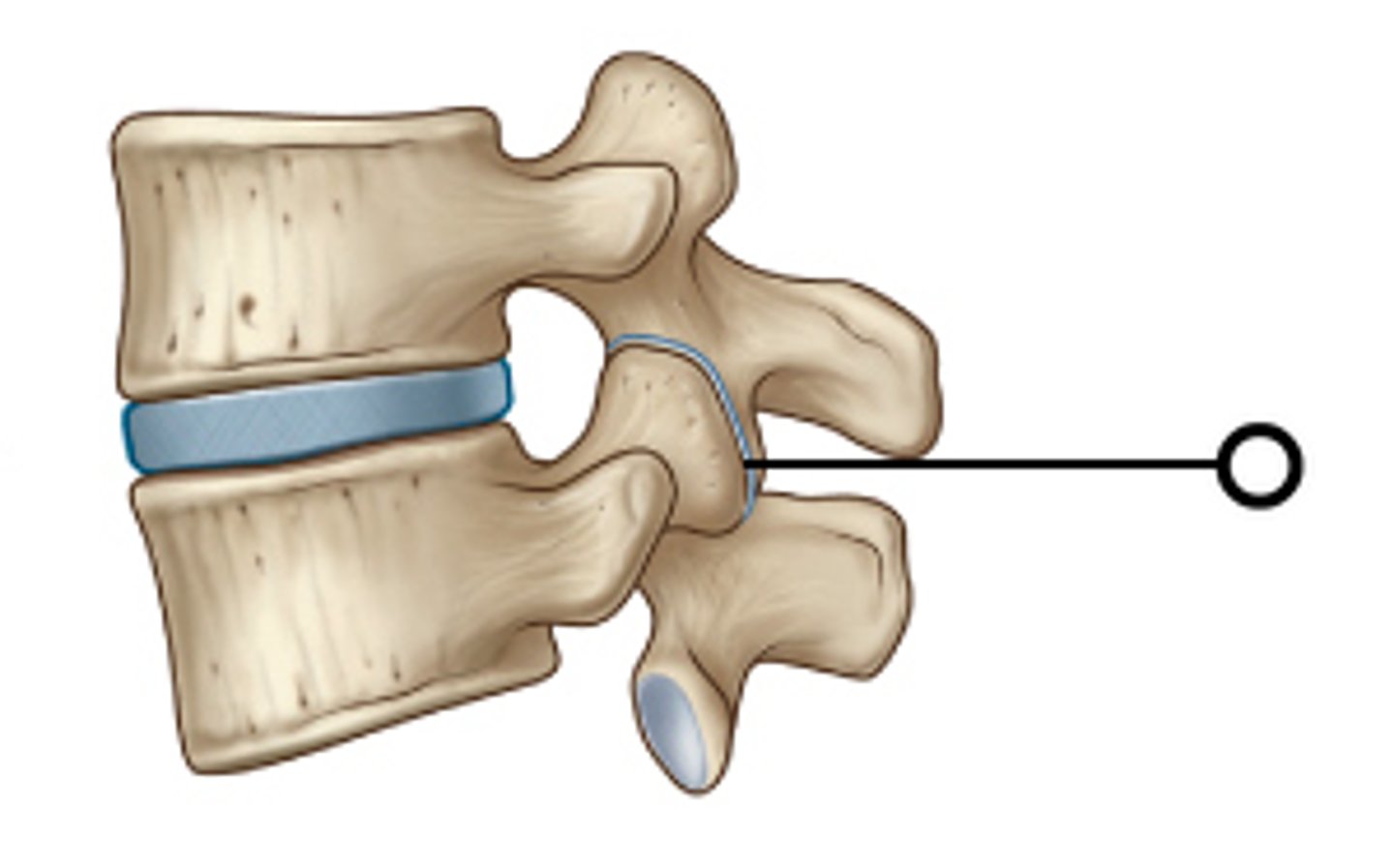
Intervertebral disc
mass of fibrocartilage between adjacent vertebrae
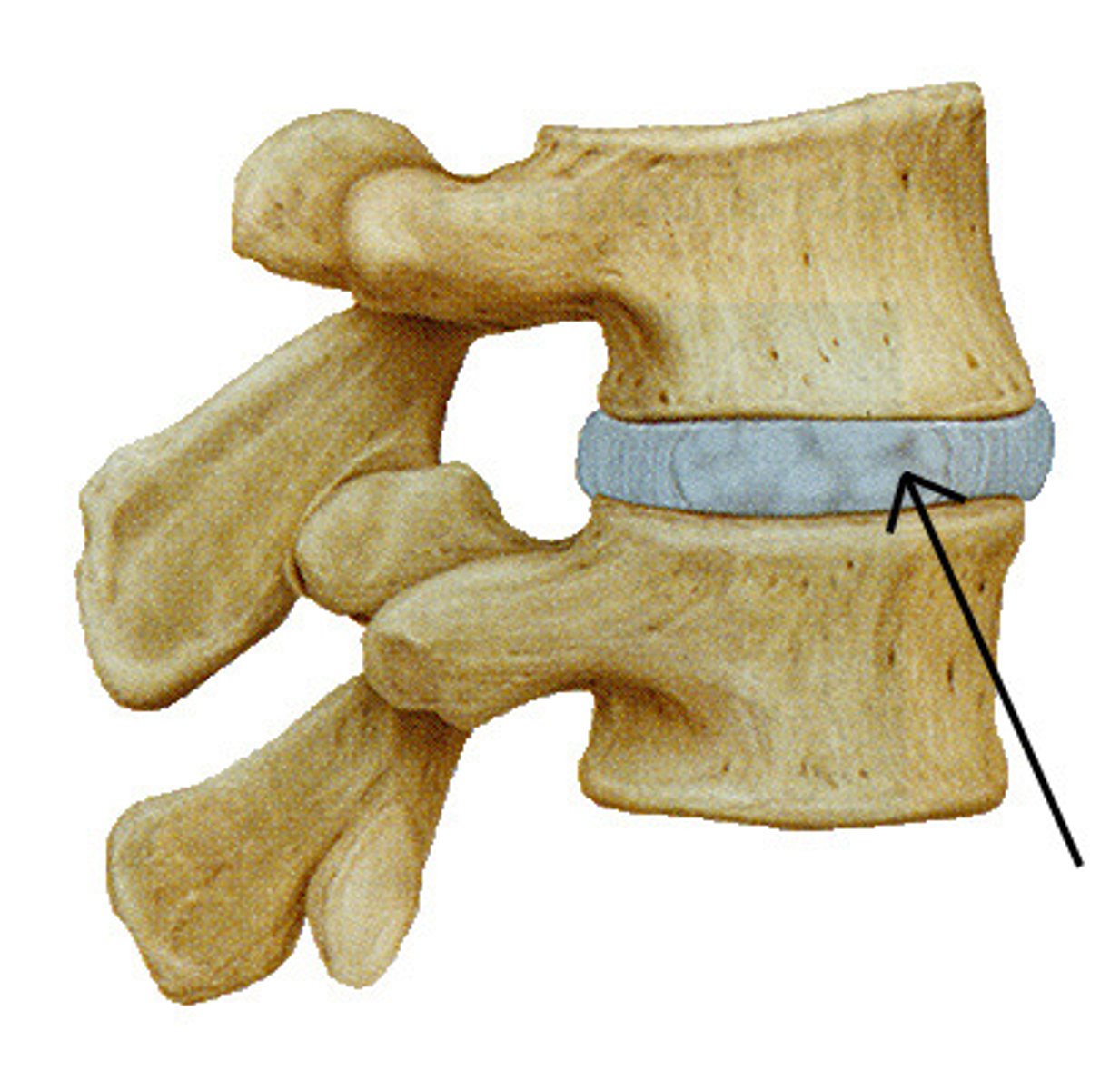
Ligament nuchae
specialized supraspinous ligament
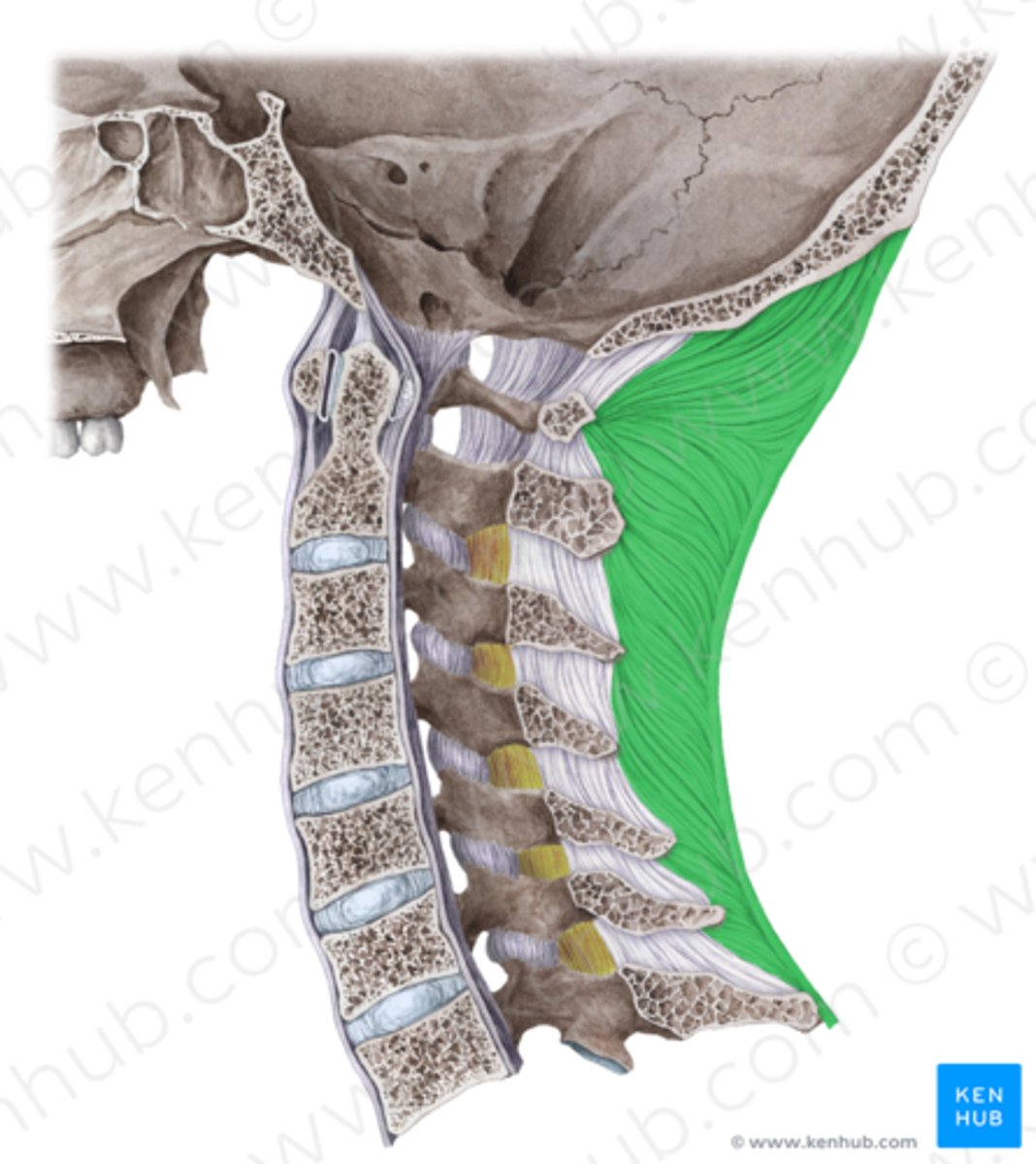
external occipital protuberance
Name the structure.
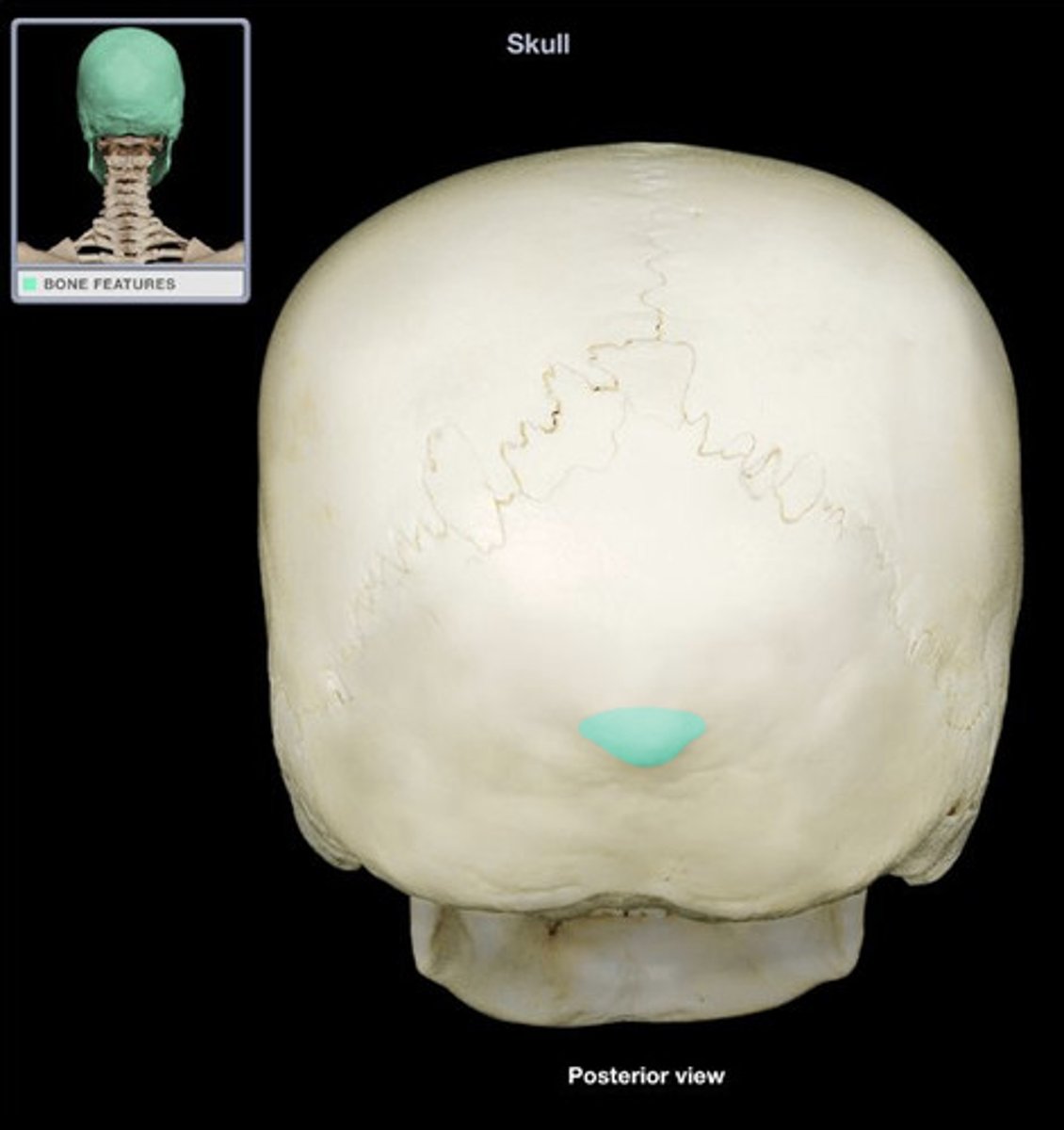
Tectorial membrane
Specialized posterior longitudinal ligament inside the spinal canalanterior to the dura sac and attached to the occipital clivus
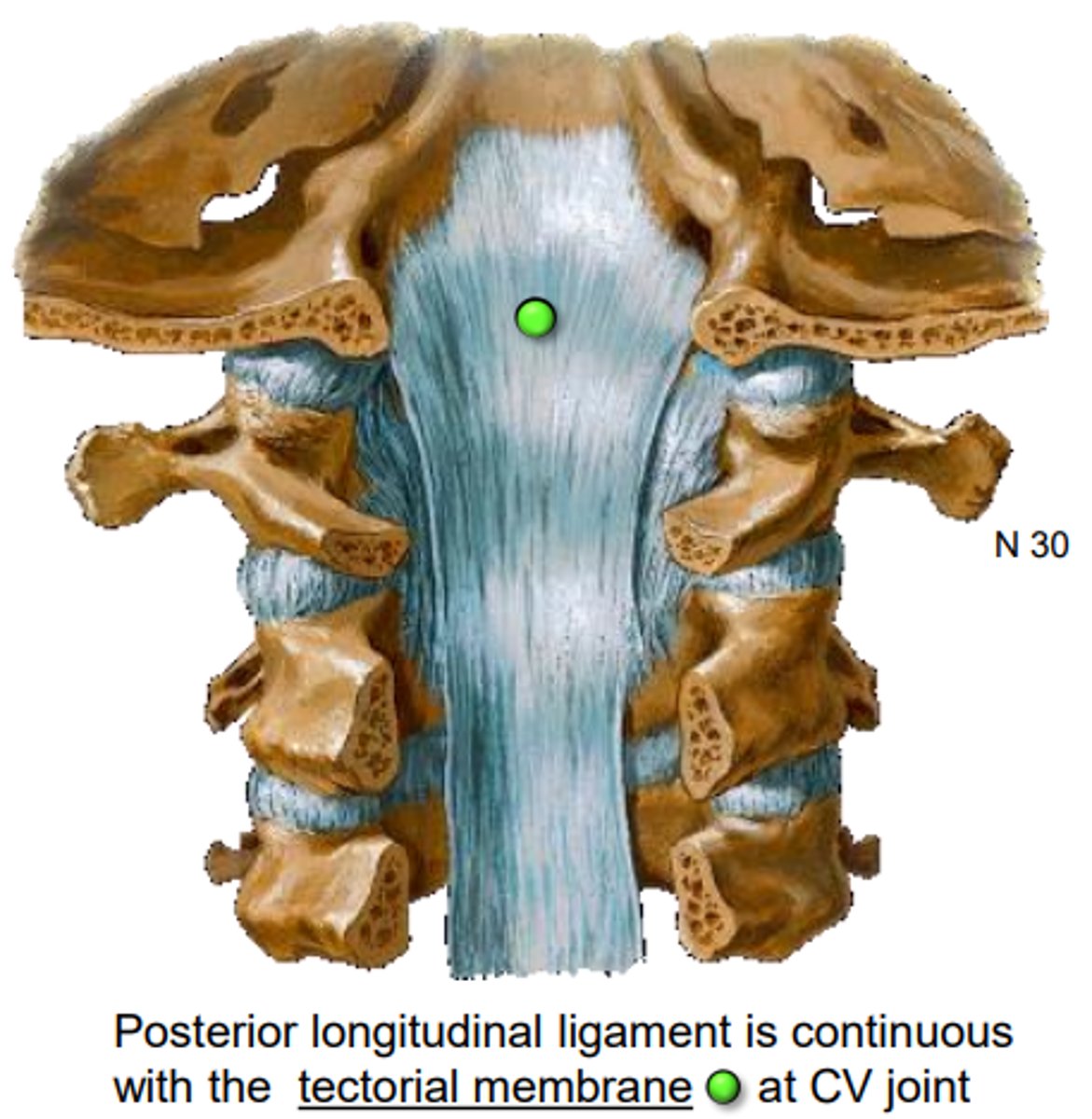
Transverse ligament of axis
What is "C"
-Holds the dens in place
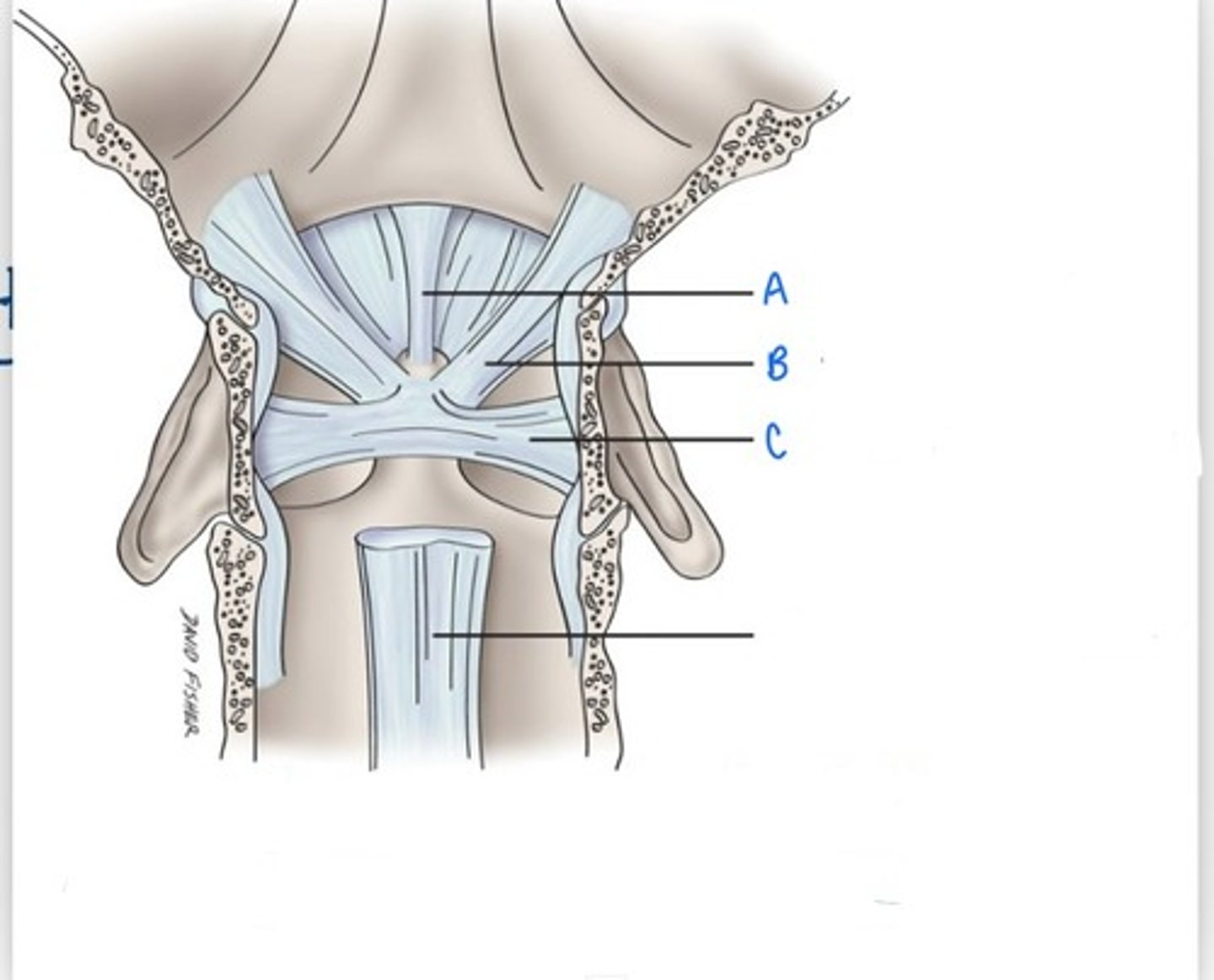
Apical ligament
What is "A"
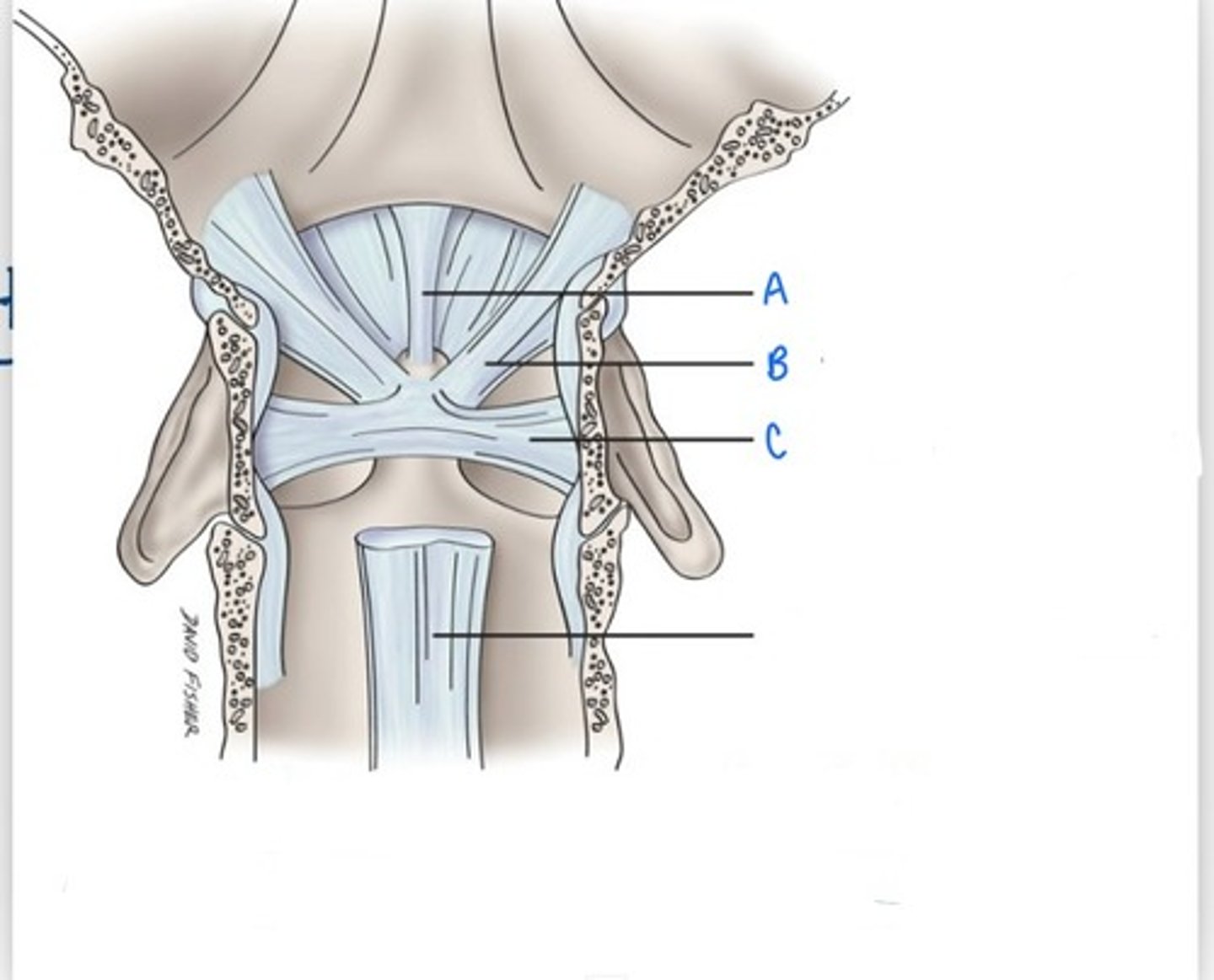
Alar ligament
What is "B"
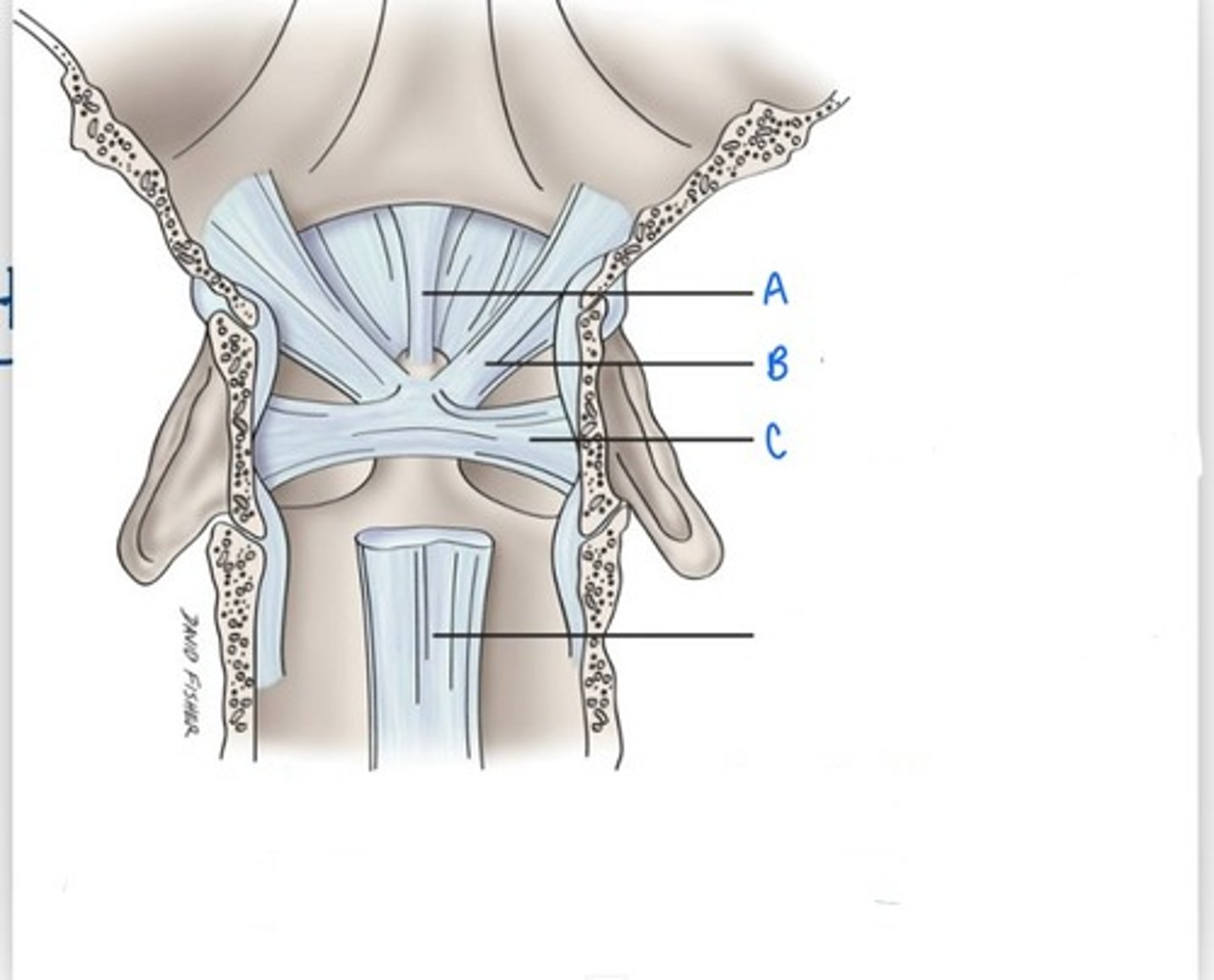
Iliolumbar ligament
What is "B"

Lumbosacral ligament
What is "A"
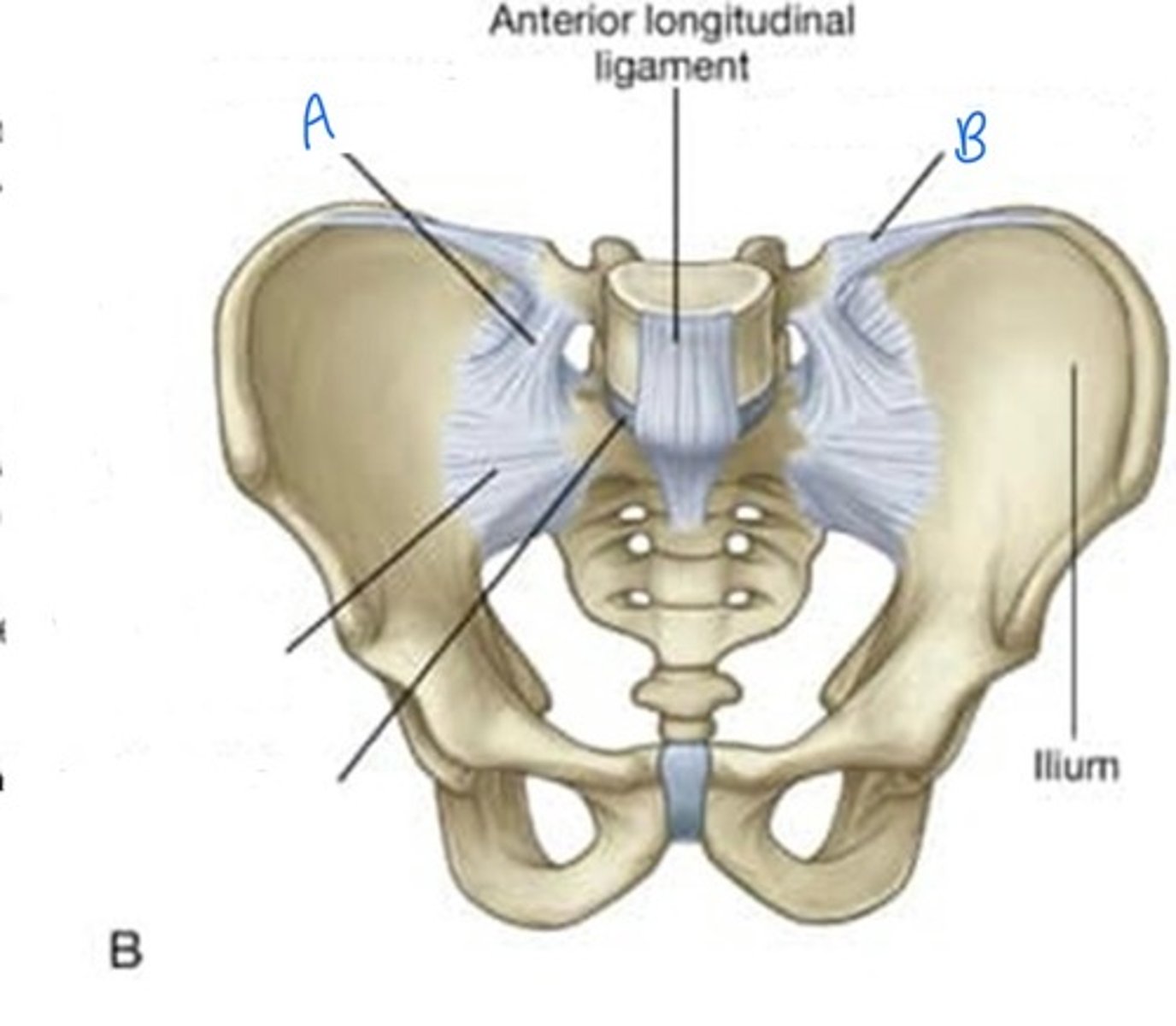
disc herniation
extrusion of the nucleus pulposus through the annulus fibrosus of an intervertebral disc
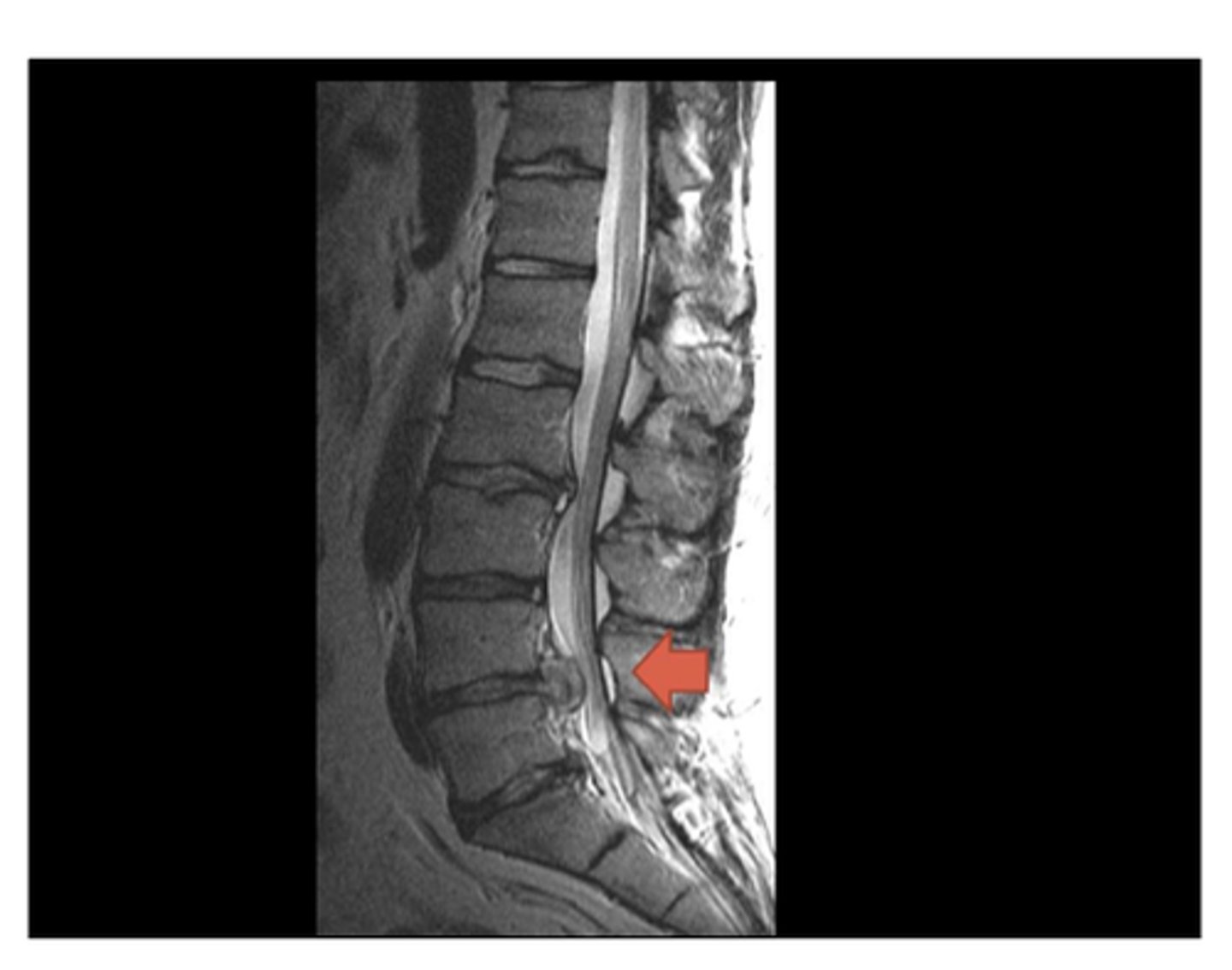
Annulus fibrosus
Composed of fibrocartilage, it is the outer portion of the intervertebral disc.
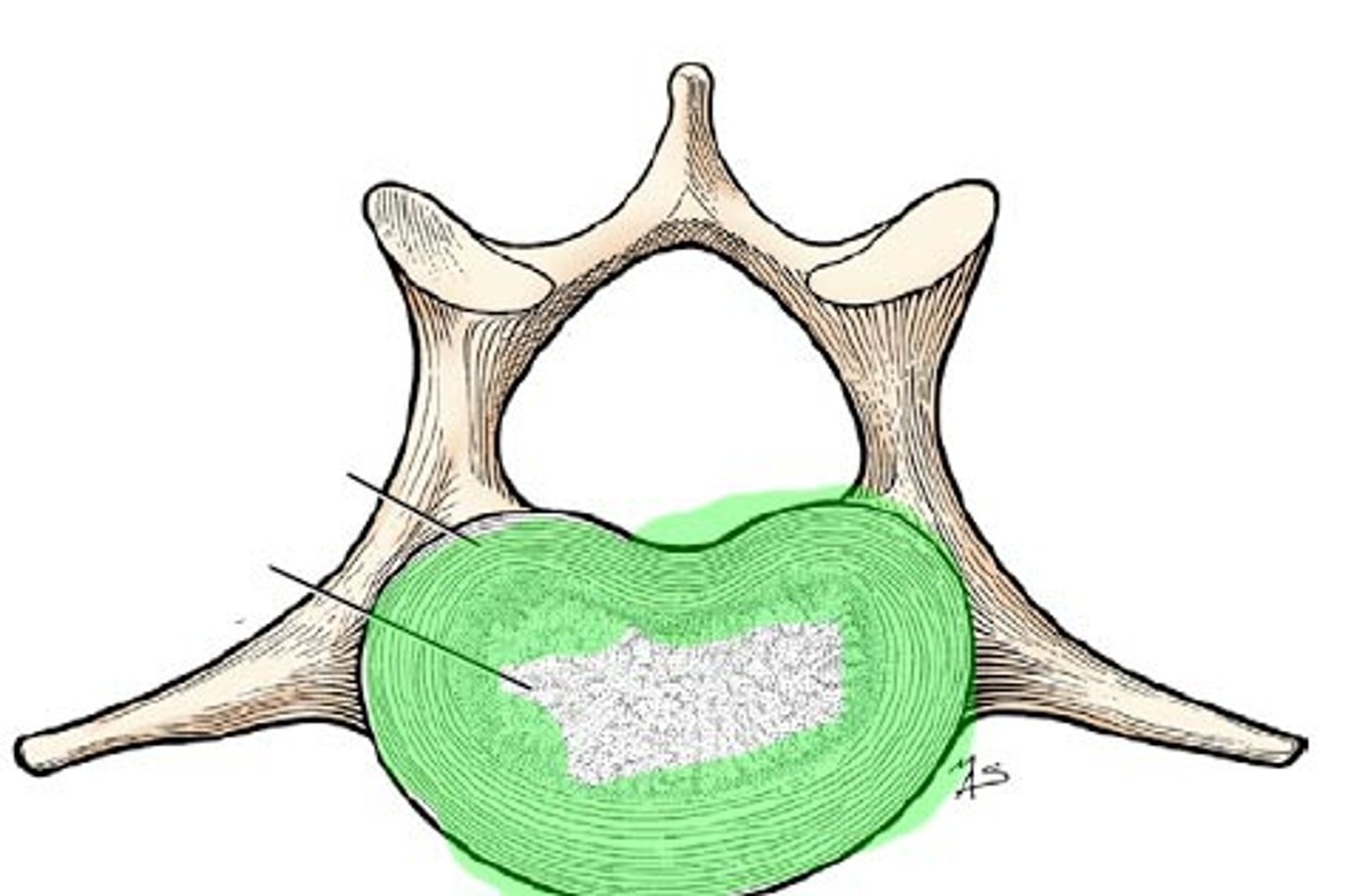
Nucleus pulposus
the soft, fibrocartilaginous, central portion of intervertebral disk
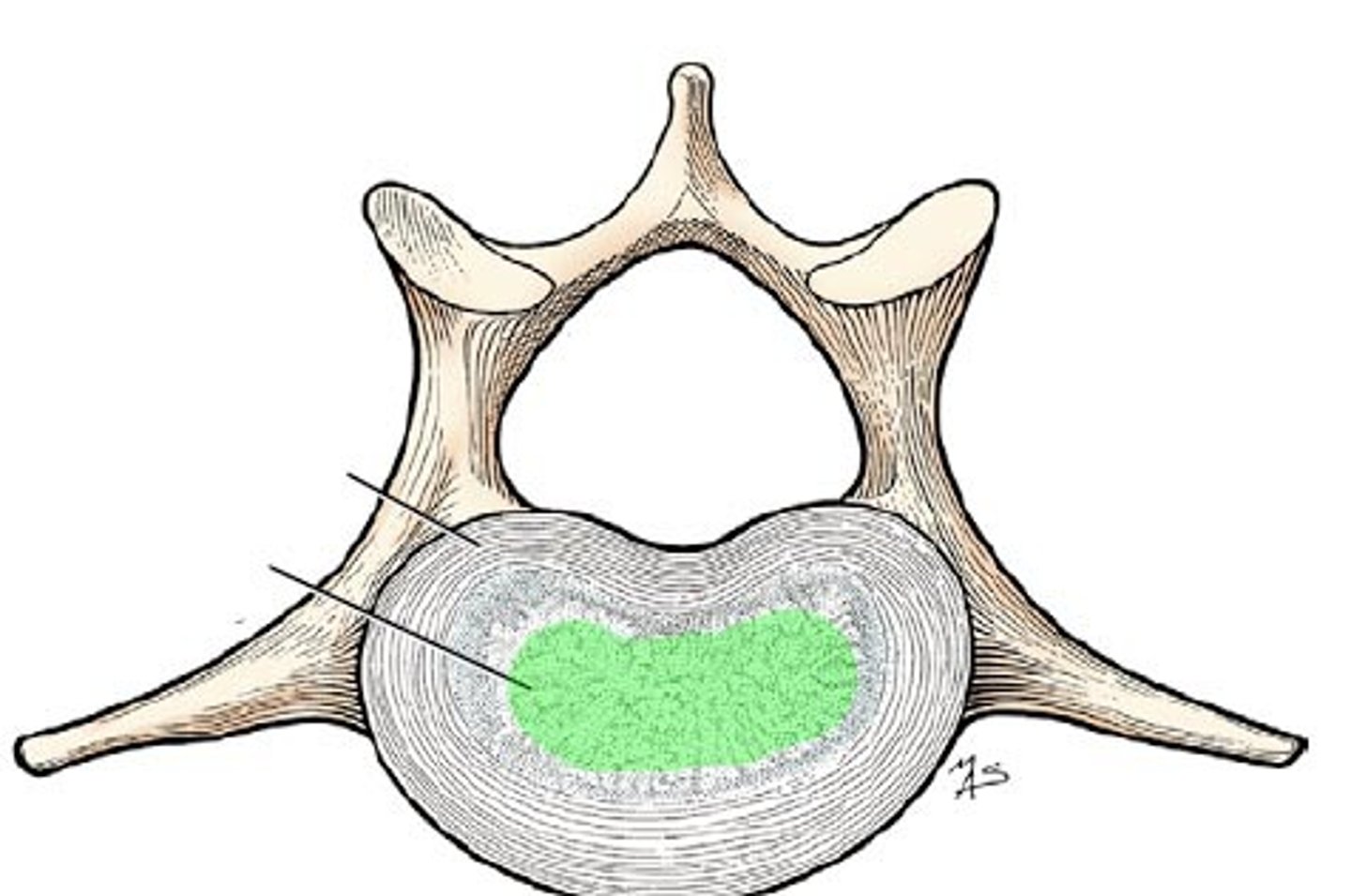
Bulge
swell or protrude outwards
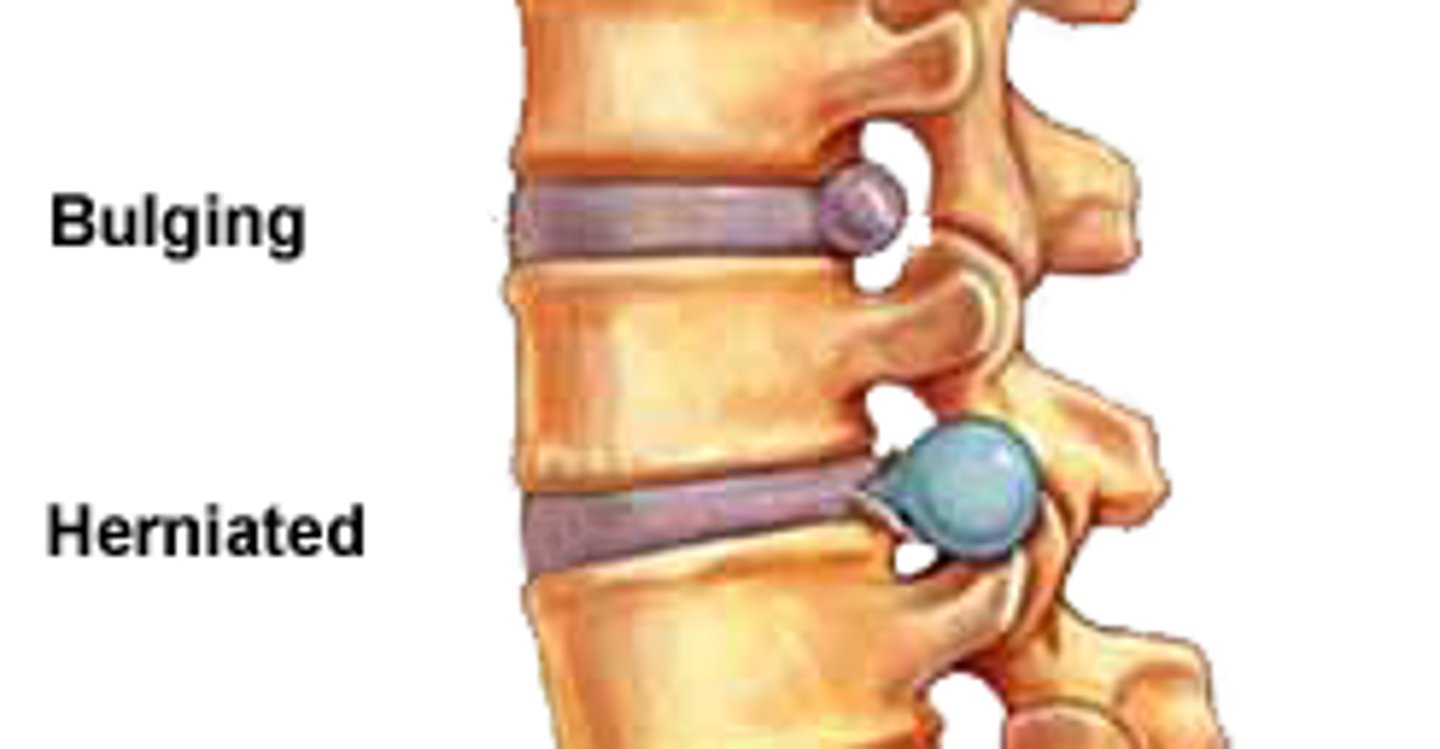
Atlanto-occipital joint
What is "A" which causes the "Yes" movement
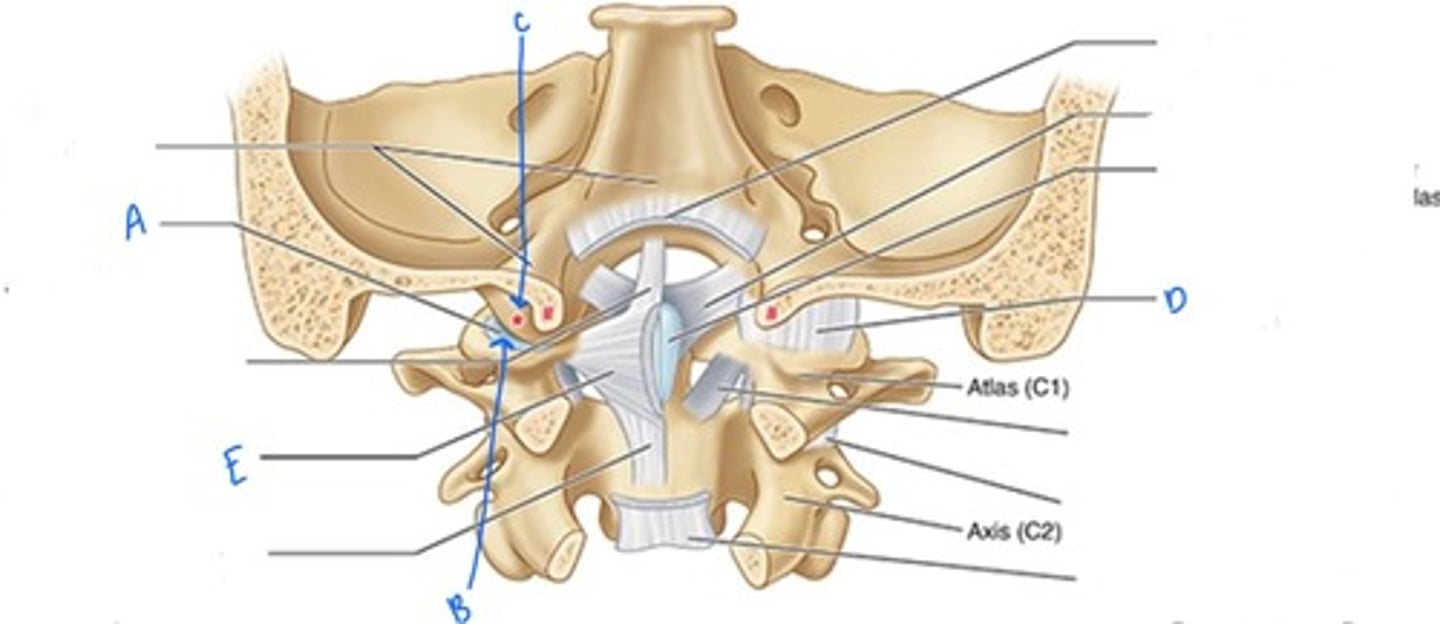
Prevent excessive movement
What does the capsule of atlanto-occipital joint do?
Occipital Condyle
What is "C"
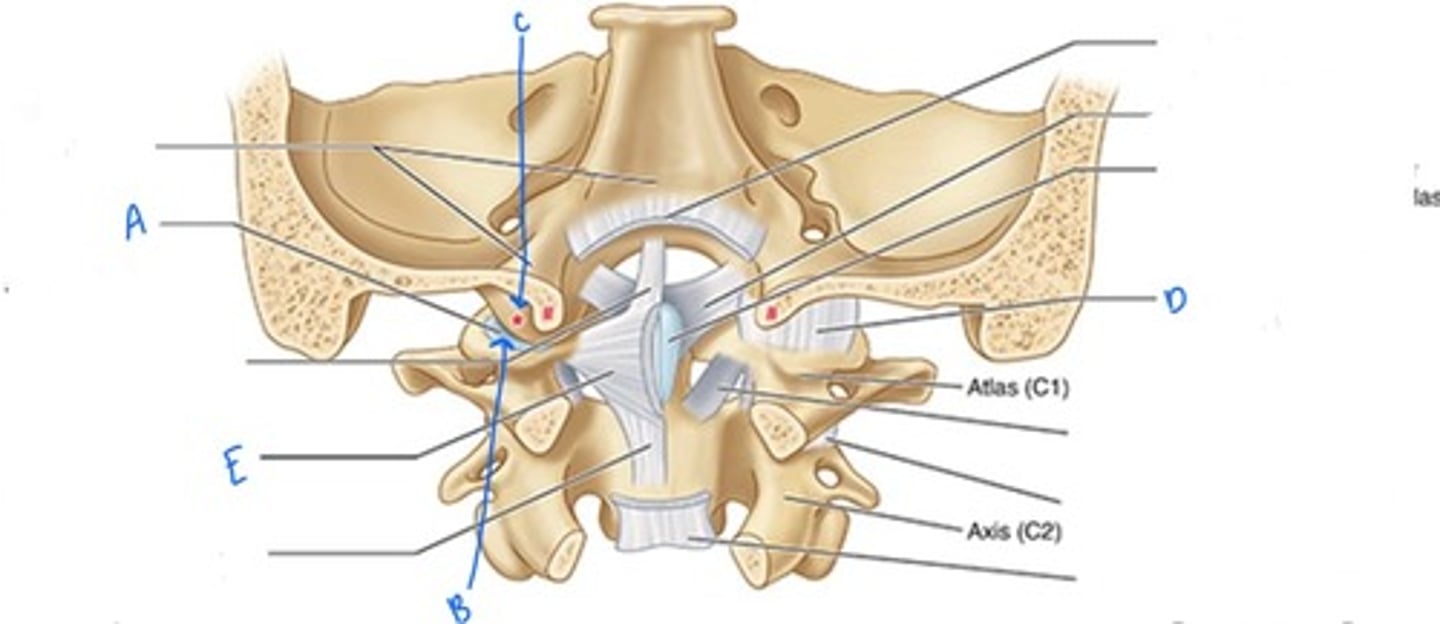
Superior articular facet of C1
What is "B"
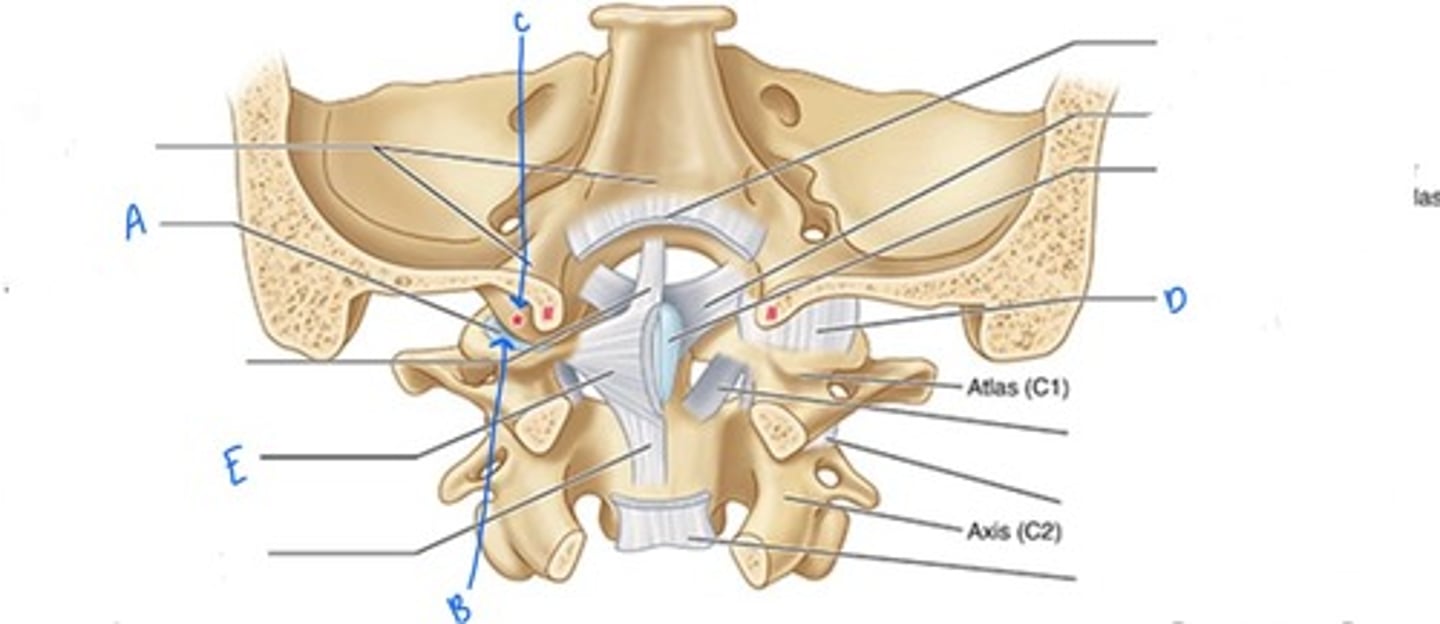
Superior vertebral notch
What is "A"
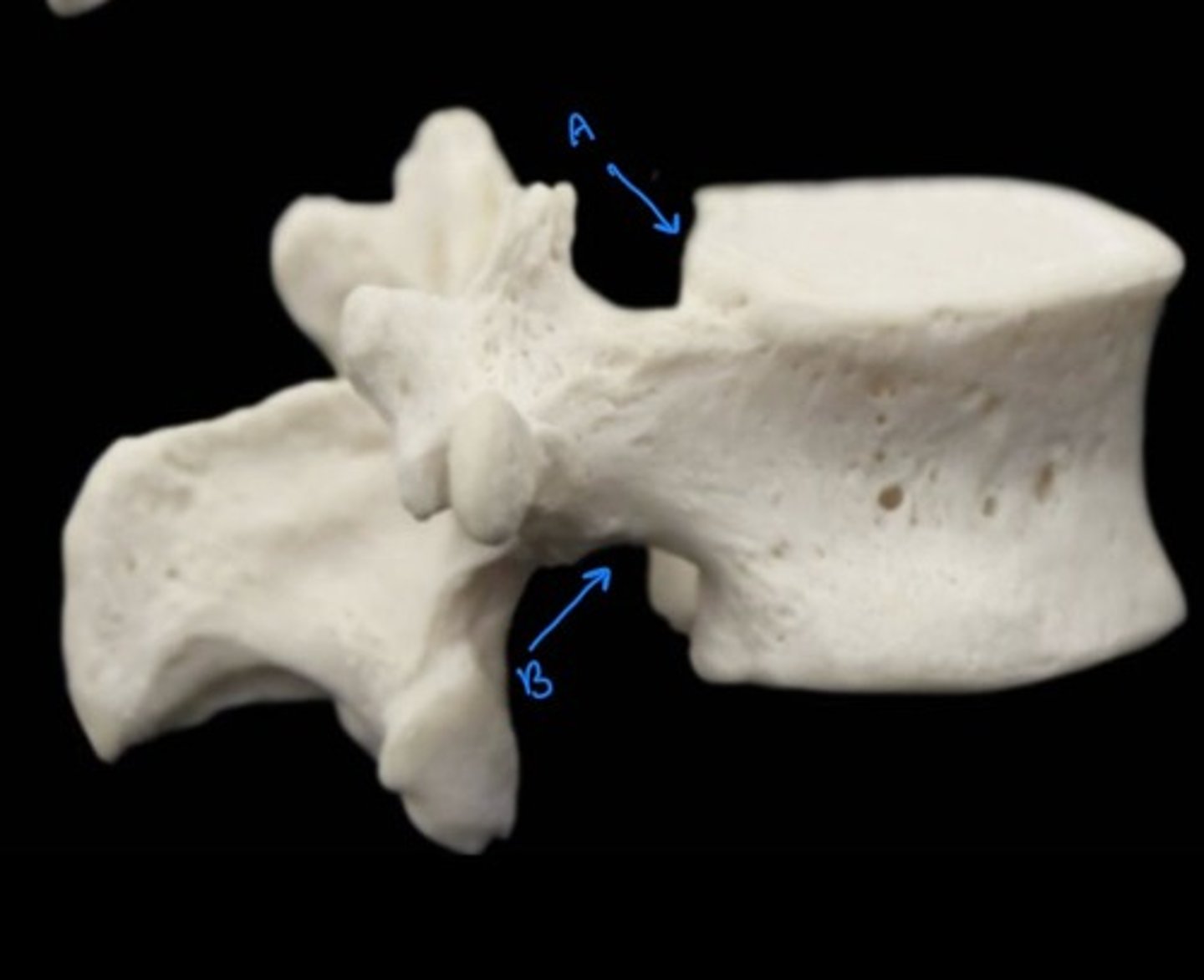
Inferior vertebral notch
What is "B"
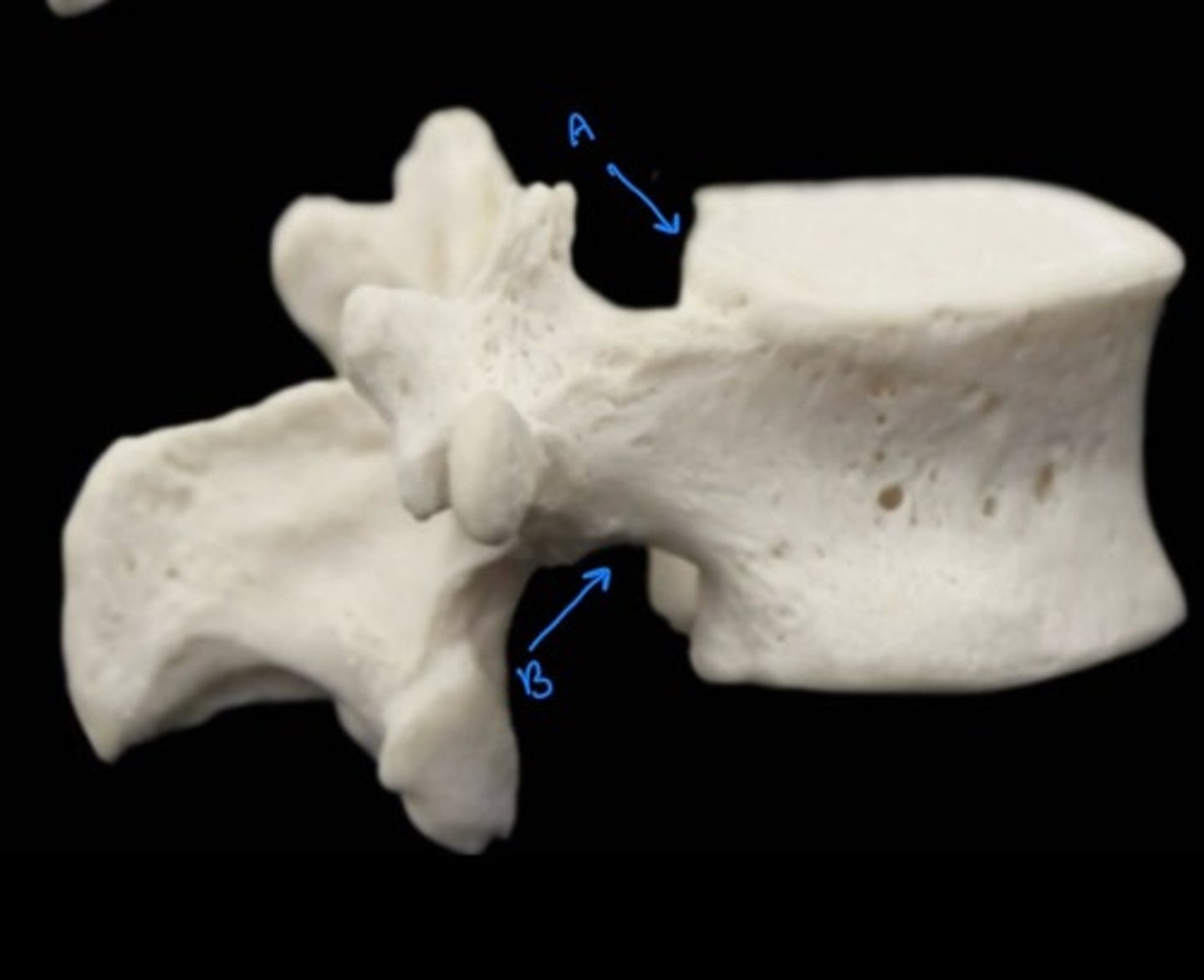
Costal demifacets (T2-T8)
WHat is "A"
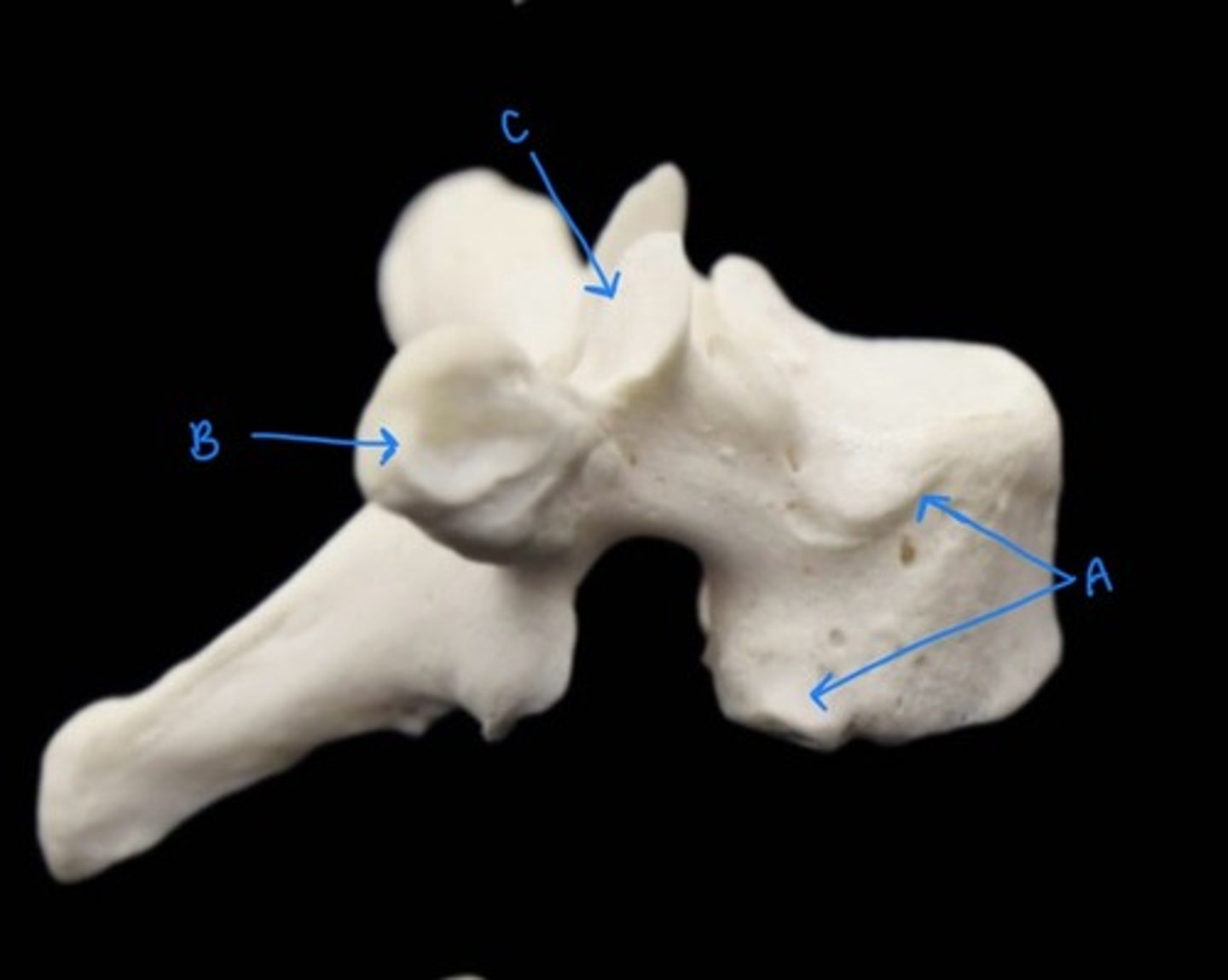
Costal facet (T1-T10)
What is "B"
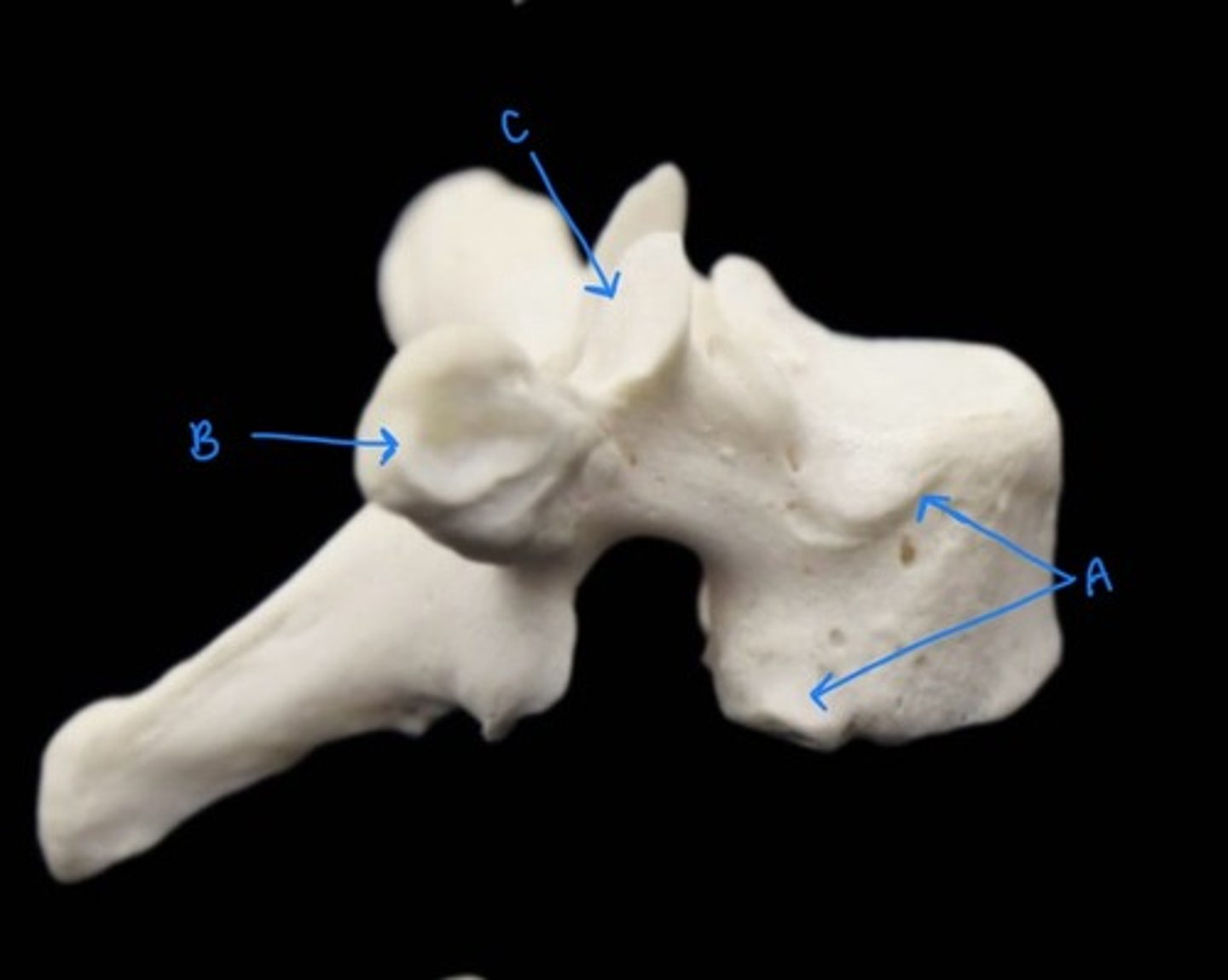
Superior articular facet
What is "C"
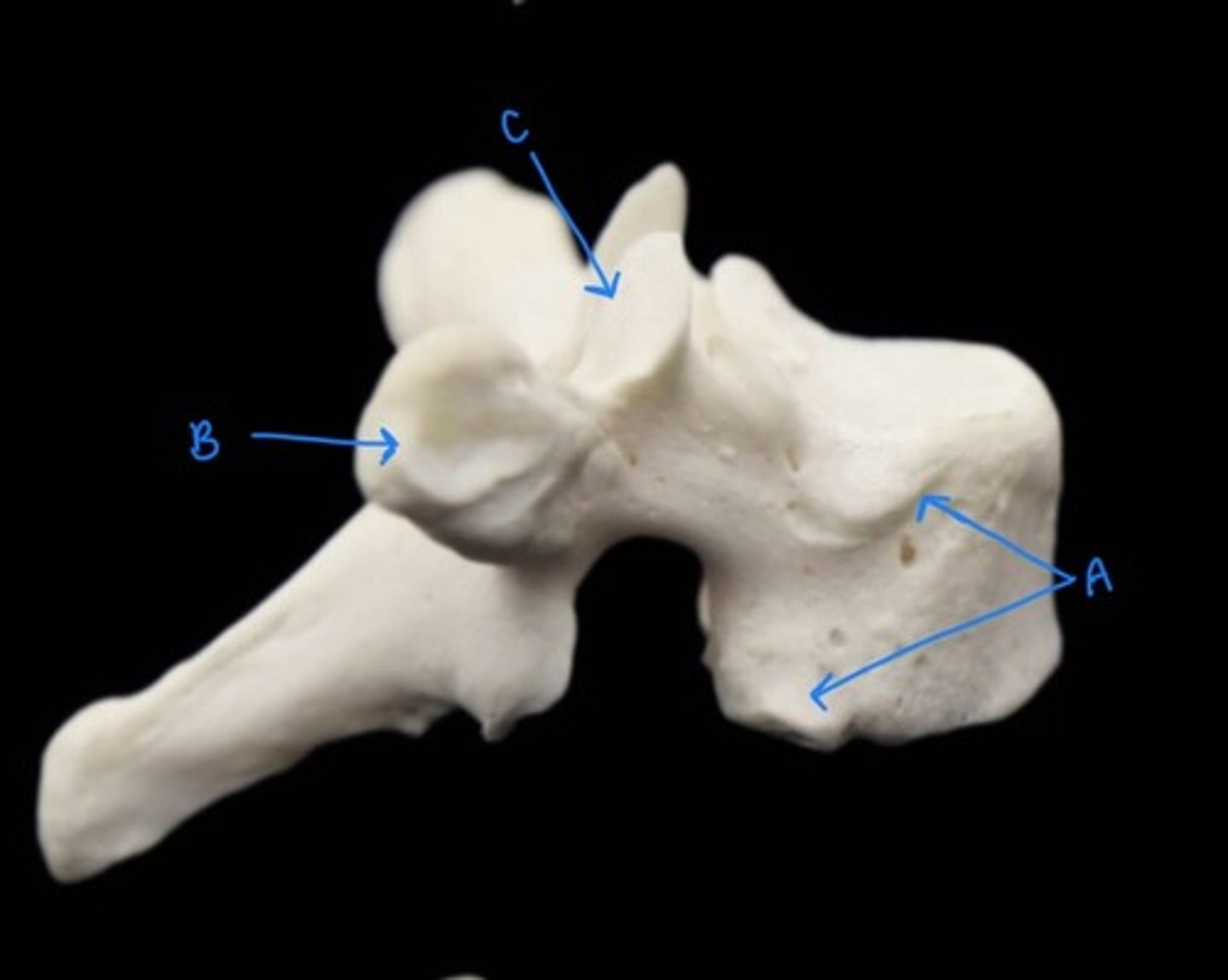
Posterior Longitudinal Ligament
What is "P"
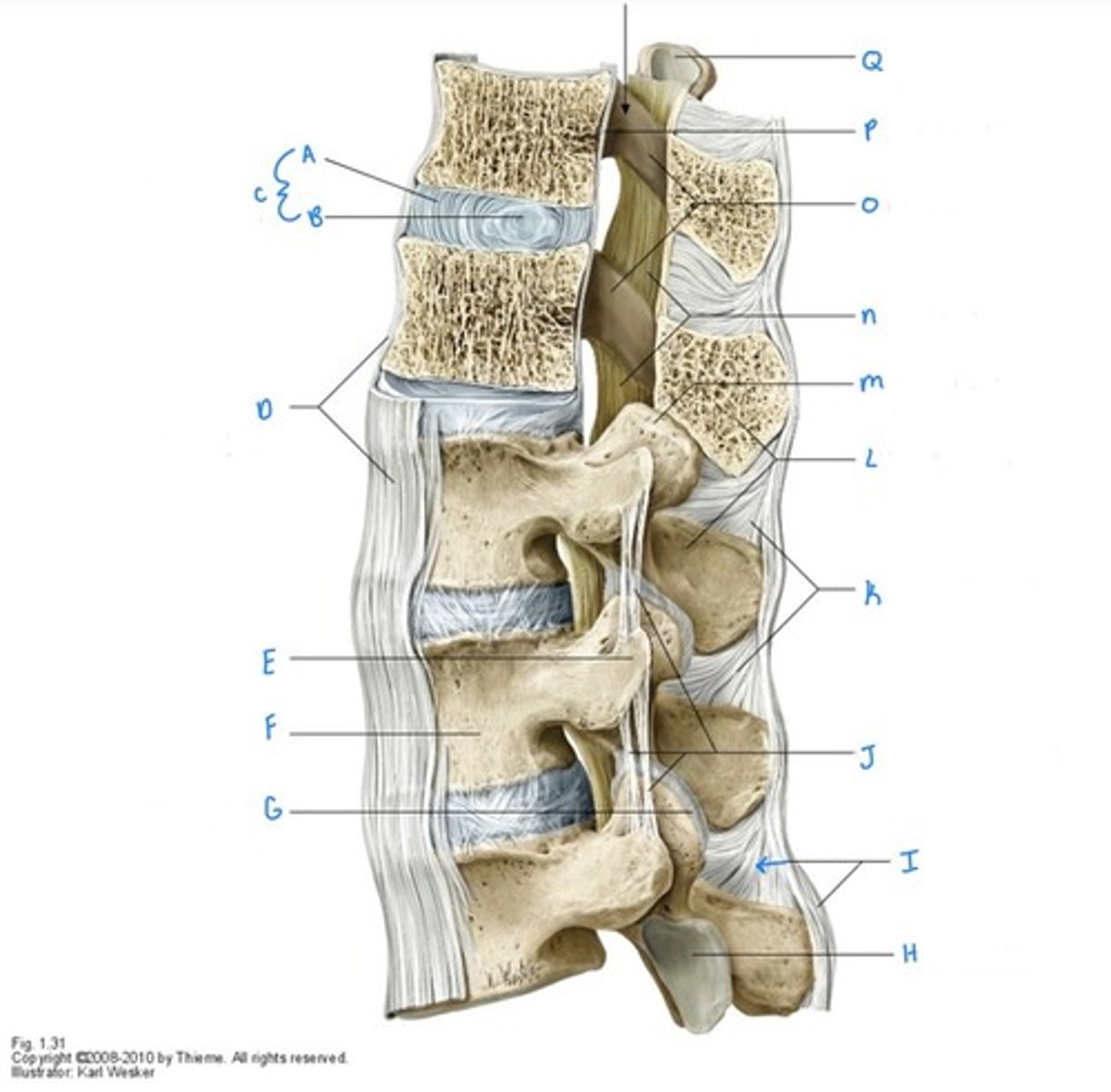
Anterior Longitudinal Ligament
What is "D"
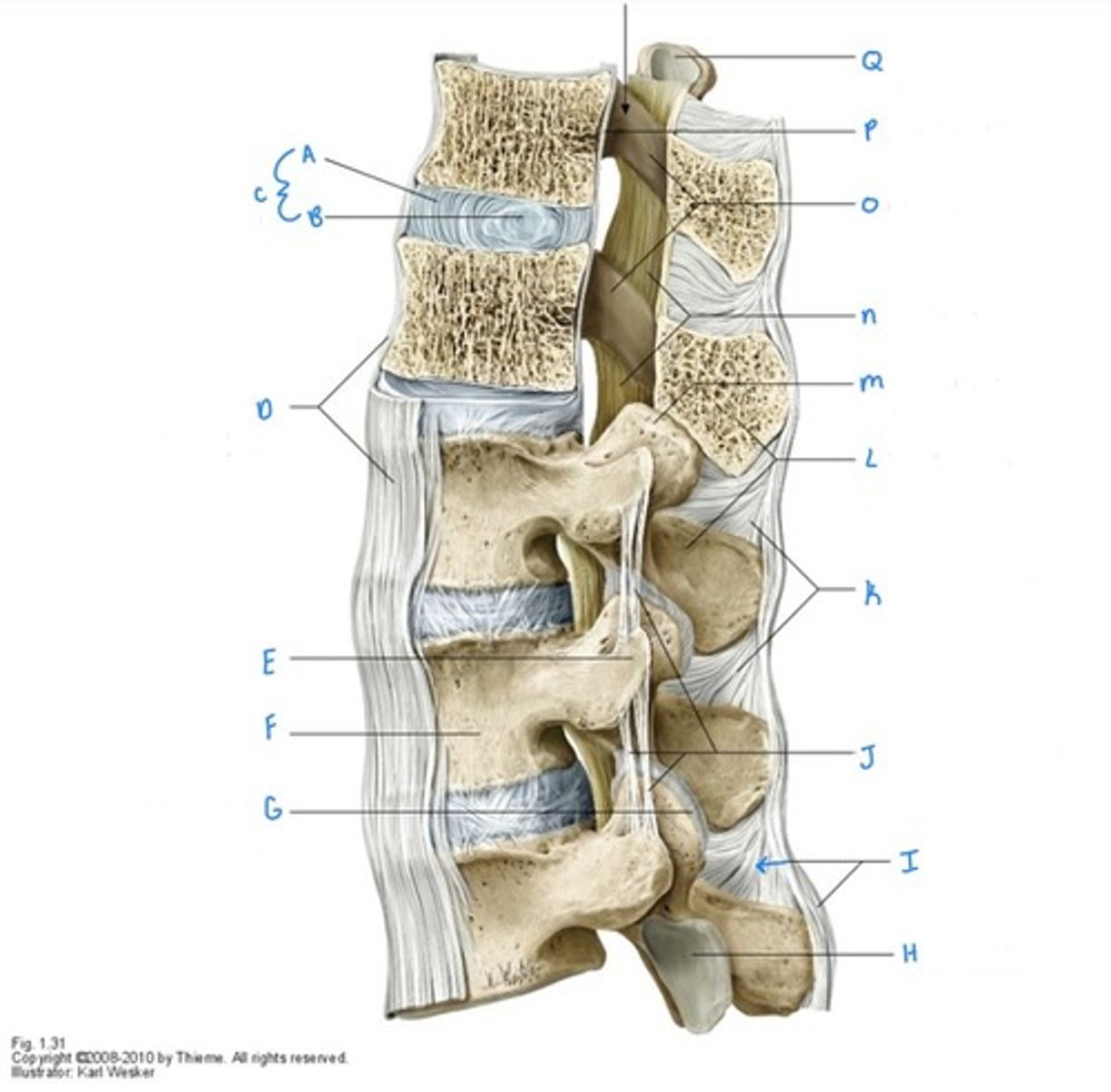
Supraspinous Ligament
What is "I"
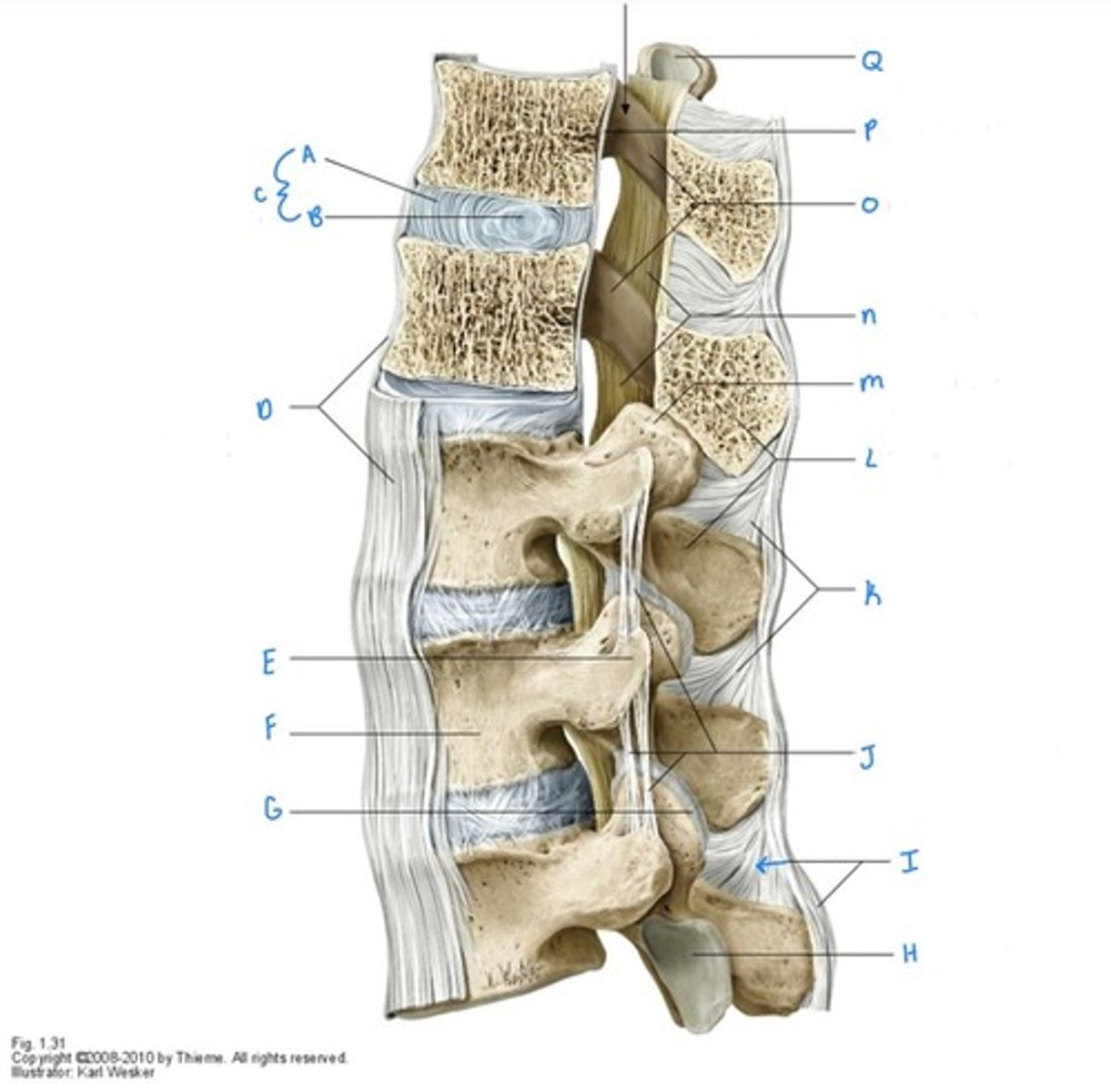
Intertransverse Ligament
What is "J"
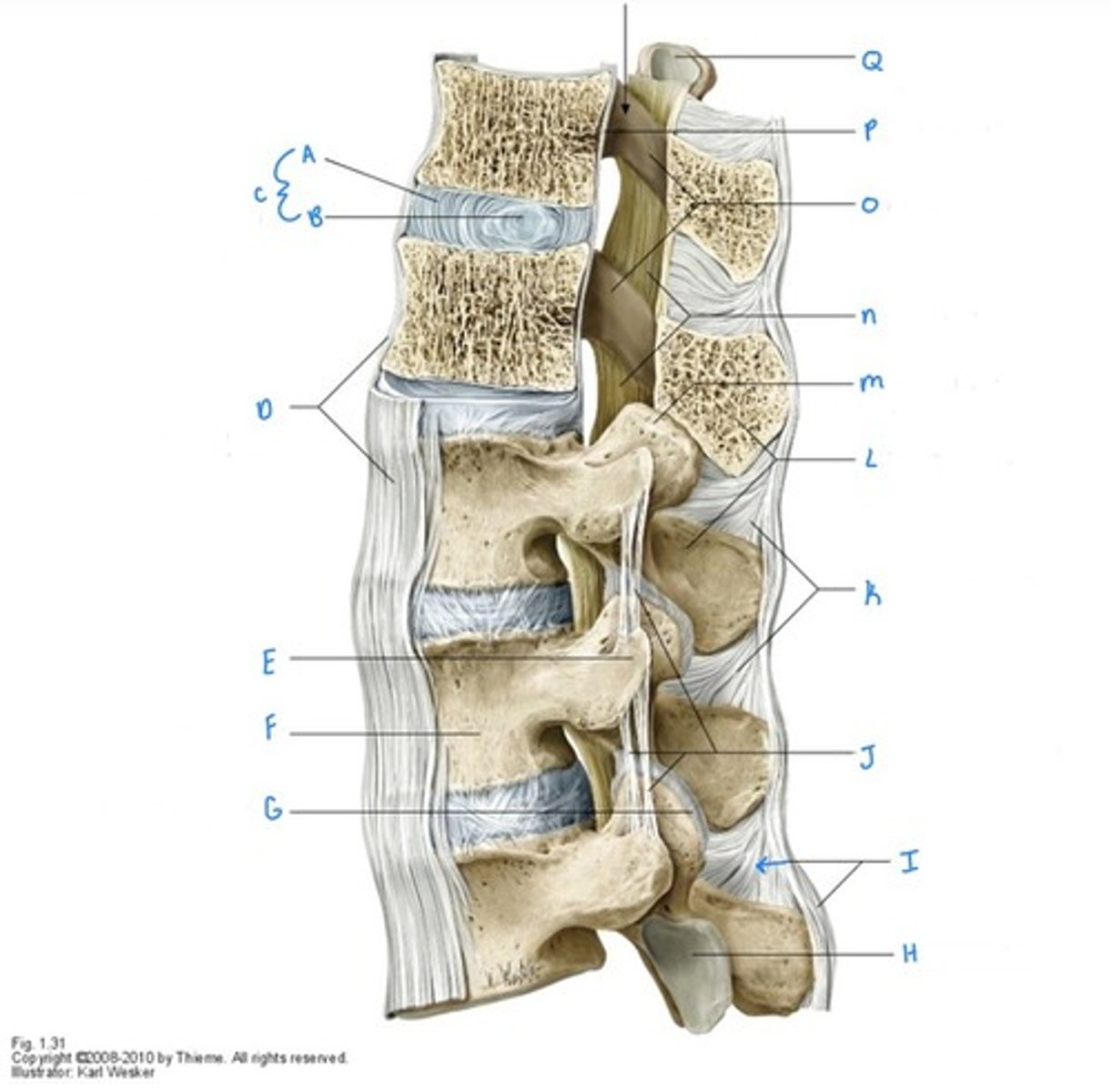
Interspinous Ligament
What is "K"
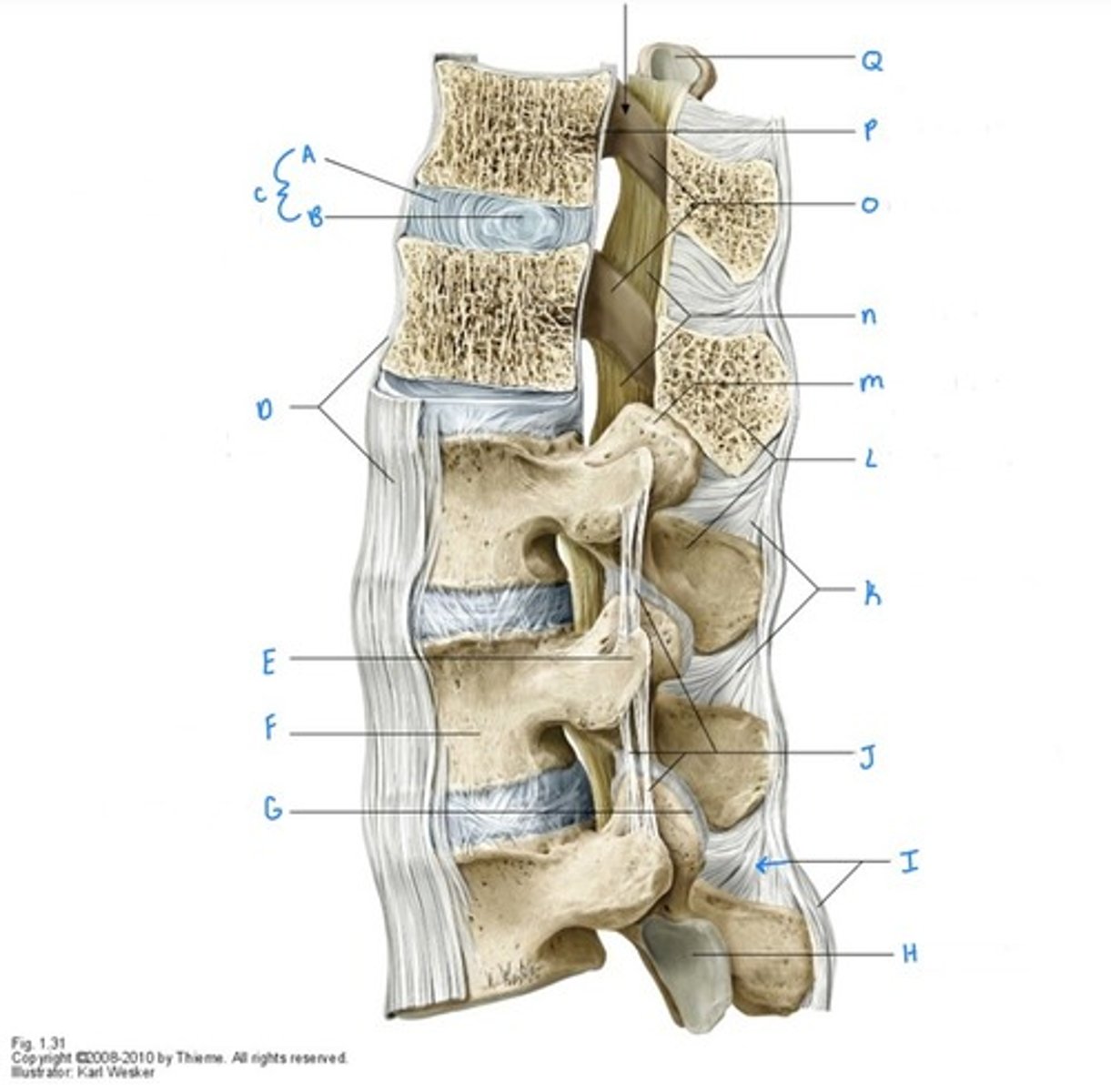
Ligamentum flavum
What is "N"

Atlanto-odontoid joint
What is the arrow pointing to which causes the "No" movement
